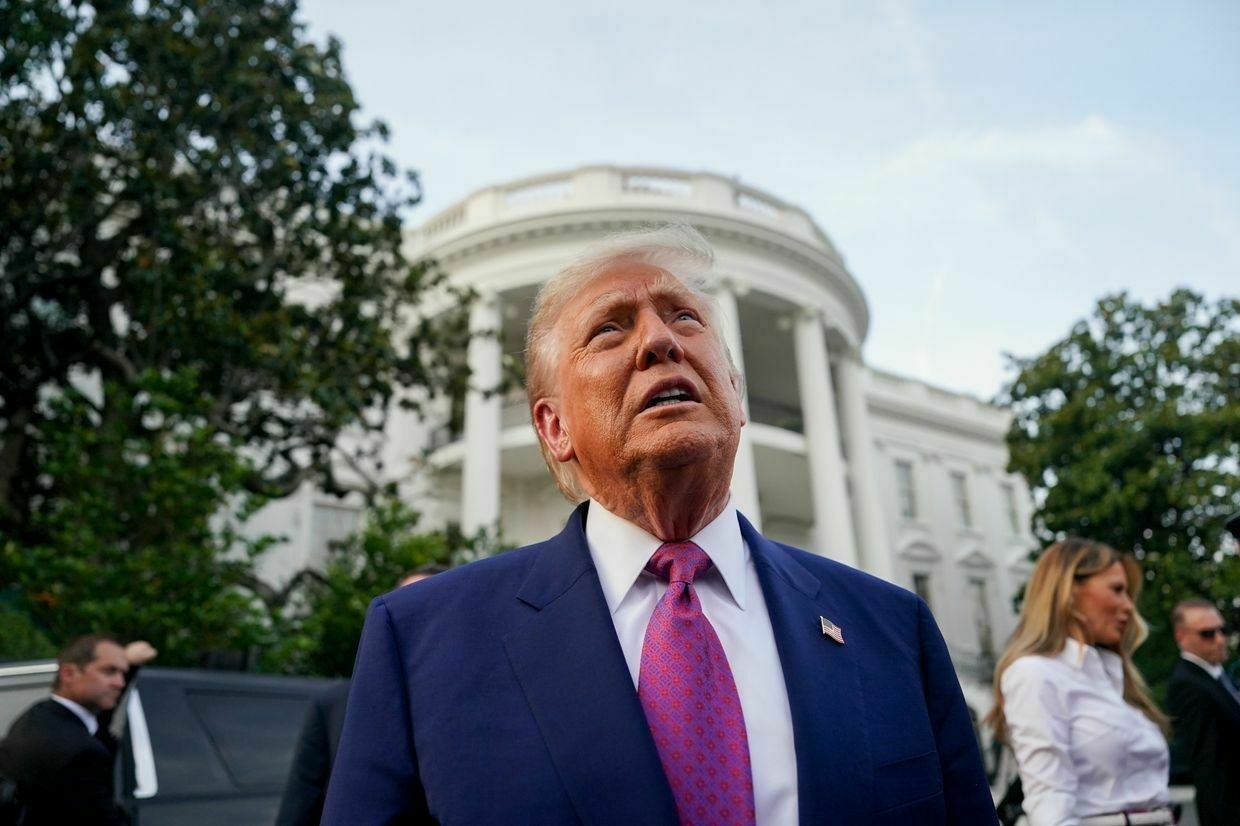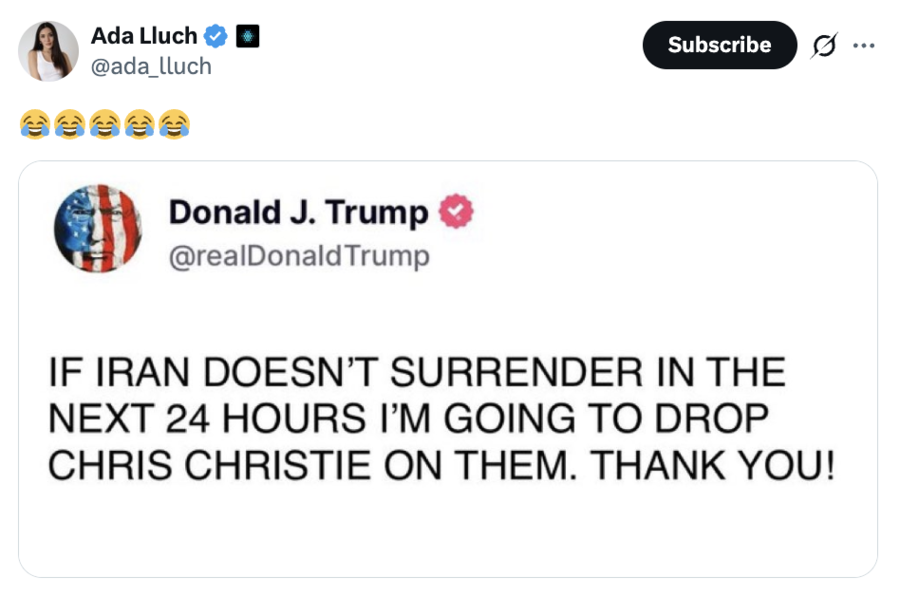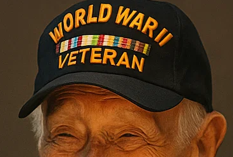-
Dutch parliament recognizes Soviet 1944 deportation of Crimean Tatars as genocide
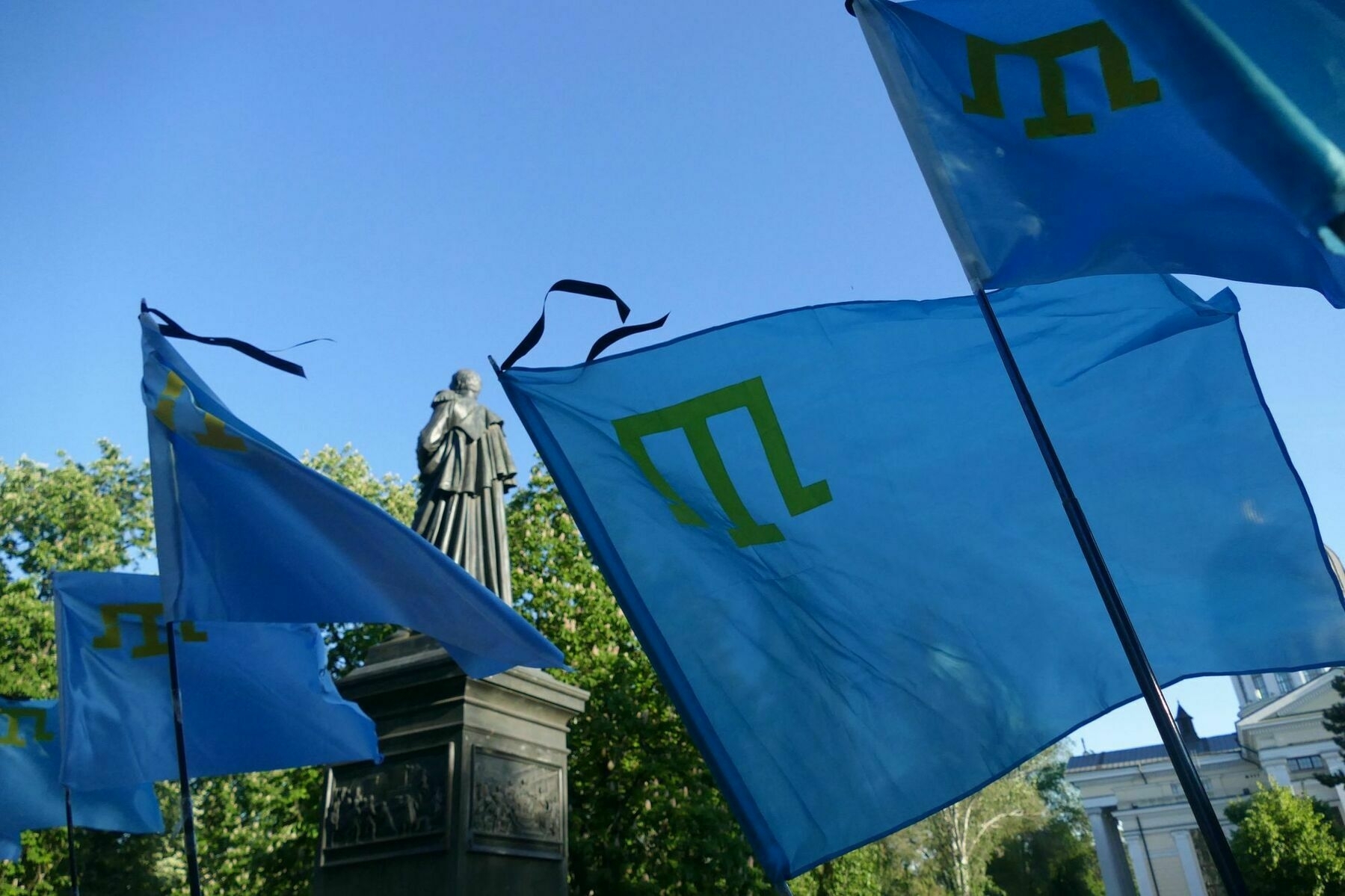
The lower house of the Dutch parliament on June 19 officially recognized the 1944 mass deportation of Crimean Tatars by the Soviet Union as genocide, according to a statement from the parliamentary press service.
The motion cited precedent from other countries that have recognized the forced deportations as genocide, including Poland, the Czech Republic, Canada, Latvia, Lithuania, and Ukraine.
In the adopted text, Dutch lawmakers declared that the Soviet-led deportation of Crimean Tatars, which took place between May 18 and 21, 1944, constitutes genocide by contemporary legal and historical definitions.
The 1944 deportation was carried out under direct orders from Soviet dictator Joseph Stalin, who labeled the entire Crimean Tatar population as traitors following the peninsula’s liberation from Nazi occupation.
Over 190,000 Tatars were forcibly removed from Crimea in a matter of days, though some estimates place the number closer to 430,000, and sent to remote areas in Central Asia, mainly Uzbekistan, in brutal conditions that led to mass deaths.
The document pointed to the ongoing repression of Crimean Tatars under Russian occupation since 2014. It said that “many Crimean Tatars have been unjustly imprisoned, subjected to torture by the Russian Federation, or forcibly disappeared,” and added that “Russia has likely continued a policy of genocide against Crimean Tatars."
Foreign Minister Andrii Sybiha welcomed the decision, calling it “a powerful gesture of solidarity with the Crimean Tatar people, who are still facing persecution under Russia’s temporary occupation of the Ukrainian Crimea peninsula."
Sybiha noted that the Netherlands is now the seventh country to formally recognize the deportation as genocide and urged other nations to follow suit.
“Recognizing this historical injustice is critical not only for establishing truth and justice, but also for preventing future atrocities,” the minister wrote.
Ukraine’s parliament recognized the deportation as genocide in 2015 and established May 18 as the official Day of Remembrance for the Victims of the Genocide of the Crimean Tatar People.
Who are the Crimean Tatars?Crimean Tatars are one of Ukraine’s indigenous peoples who have been central to Crimea’s history for many centuries.The Kyiv IndependentAnastasiia Lapatina

-
Russia would react 'very negatively' to Iran leader's assassination, Kremlin says
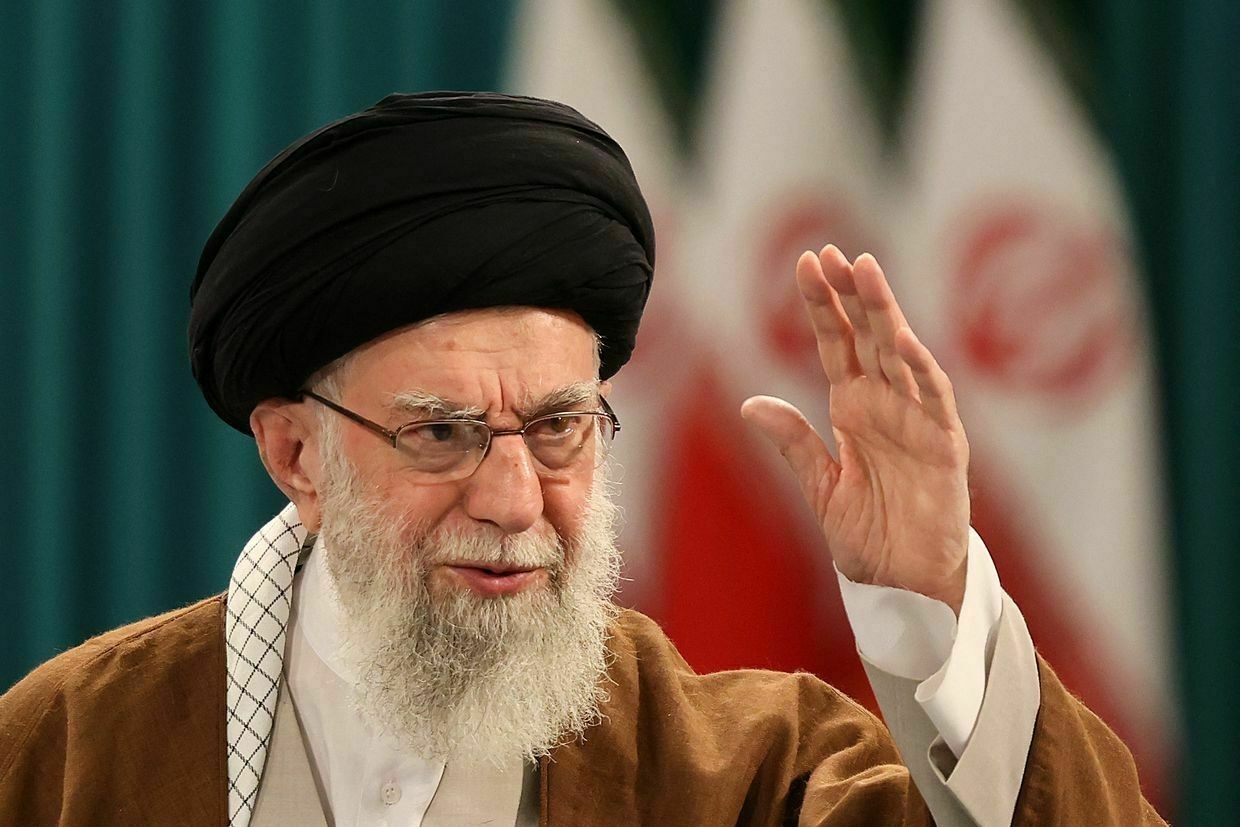
Regime change in Iran is “unacceptable” and the assassination of Supreme Leader Ayatollah Ali Khamenei would “open Pandora’s box,” Kremlin spokesperson Dmitry Peskov told Sky News in an interview published June 20.
Russia, which signed a strategic partnership with Iran in January, has reportedly grown increasingly alarmed as the United States weighs deeper involvement in Israel’s military campaign against Tehran.
Earlier, U.S. President Donald Trump suggested the option of assassinating Iran’s Supreme Leader Khamenei remains on the table, though he said the U.S. does not plan to act on it “for now.”
The comment followed reporting that Israel had earlier proposed a plan to kill Khamenei — a proposal Trump initially rejected, according to a U.S. official cited by AP.
Peskov warned that any attempt at regime change in Tehran or threats to its leadership would “open Pandora’s box,” deepening instability across the Middle East and beyond.
"(Regime change in Iran) is unimaginable," Peskov said. “It should be unacceptable, even talking about that should be unacceptable for everyone.” He added that the killing of Khamenei would promote extremist sentiment inside Iran and provoke unpredictable consequences.
“The situation is extremely tense and is dangerous not only for the region but globally,” Peskov said. “An enlargement of the composition of the participants of the conflict is potentially even more dangerous. It will lead only to another circle of confrontation and escalation of tension in the region."
Russia has been a close regional ally of Iran, while Tehran supplied drones and ballistic missiles for Moscow’s war against Ukraine. Meanwhile, Israel has maintained a delicate balance, refraining from joining Western sanctions against Moscow while condemning Iran’s role in supporting Russia’s war effort.
Asked on whether Moscow would respond to a possible strike against Khamenei, Peskov declined to specify, saying any reaction would come from “inside Iran."
Peskov also commented on Trump’s dismissive response to Russian President Vladimir Putin’s offer to mediate between Israel and Iran. The U.S. president reportedly told Putin to “mediate your own conflict” in reference to the Russia-Ukraine war. Peskov shrugged off the remark, calling Trump’s language “unique” and urging mutual tolerance.
Tensions have risen between the U.S. and Iran following a wave of Israeli air strikes on Iranian territory, beginning June 13. The attacks targeted nuclear infrastructure and senior Iranian commanders, prompting Iranian missile strikes on Tel Aviv and other Israeli cities.
Tehran claimed that at least 224 Iranian civilians were killed on June 16, though the figures remain unverified.
Russia has offered to mediate the crisis, with Putin reportedly reaching out to both Iranian President Masoud Pezeshkian and Israeli Prime Minister Benjamin Netanyahu. Tel Aviv, according to the Kremlin, is reluctant to accept the proposal, while the EU leaders rejected it, citing Russia’s aggression in Ukraine and its close military ties to Iran.
There’s loads of video of Israeli air defenses, and none of Ukraine’s — this is whyAs Israel and Iran continue to trade salvos, dramatic footage of air defenses battling ballistic missiles have flooded the internet. Several prominent online commentators have compared the videos coming out of Israel with those from Ukraine, questioning why Russian attacks like those on Kyiv are portrayed in relatively sparse detail,The Kyiv IndependentYuliia Taradiuk
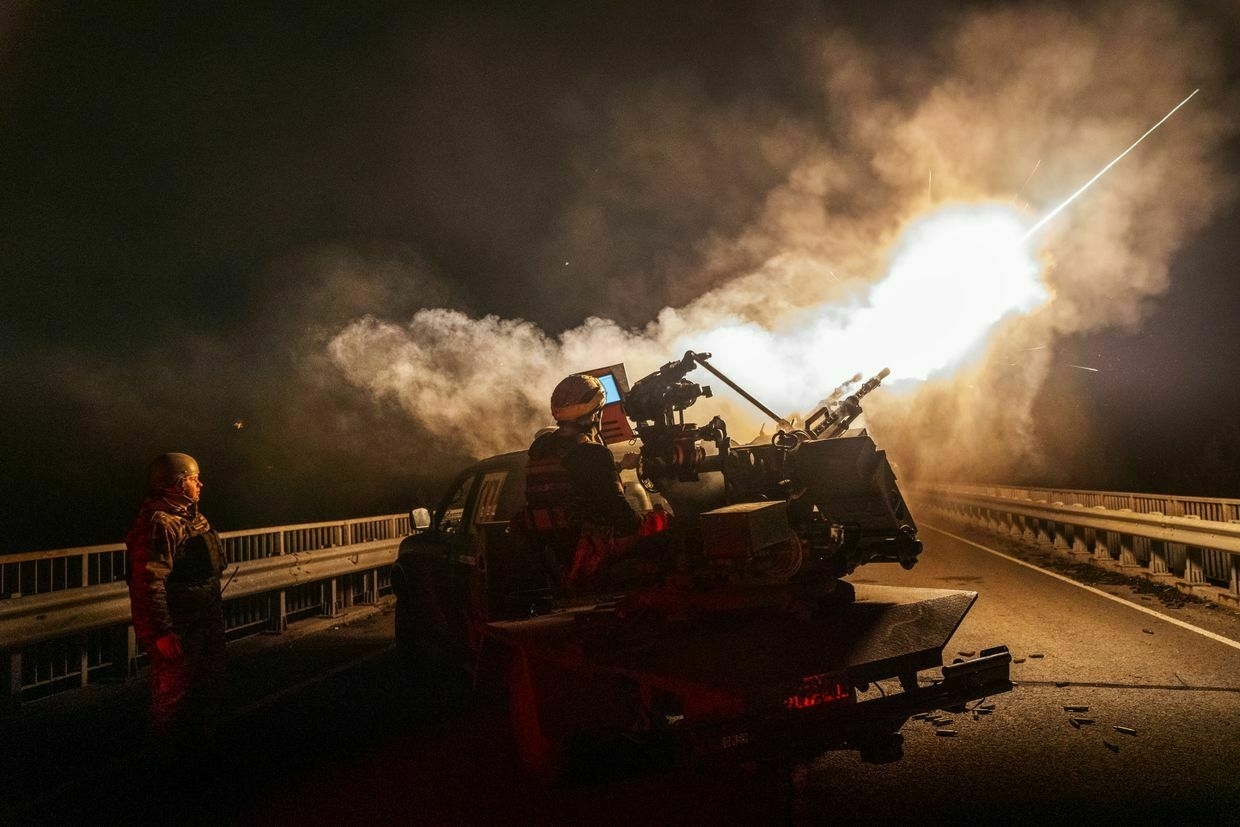
-
General Staff: Russia has lost 1,009,330 troops in Ukraine since Feb. 24, 2022
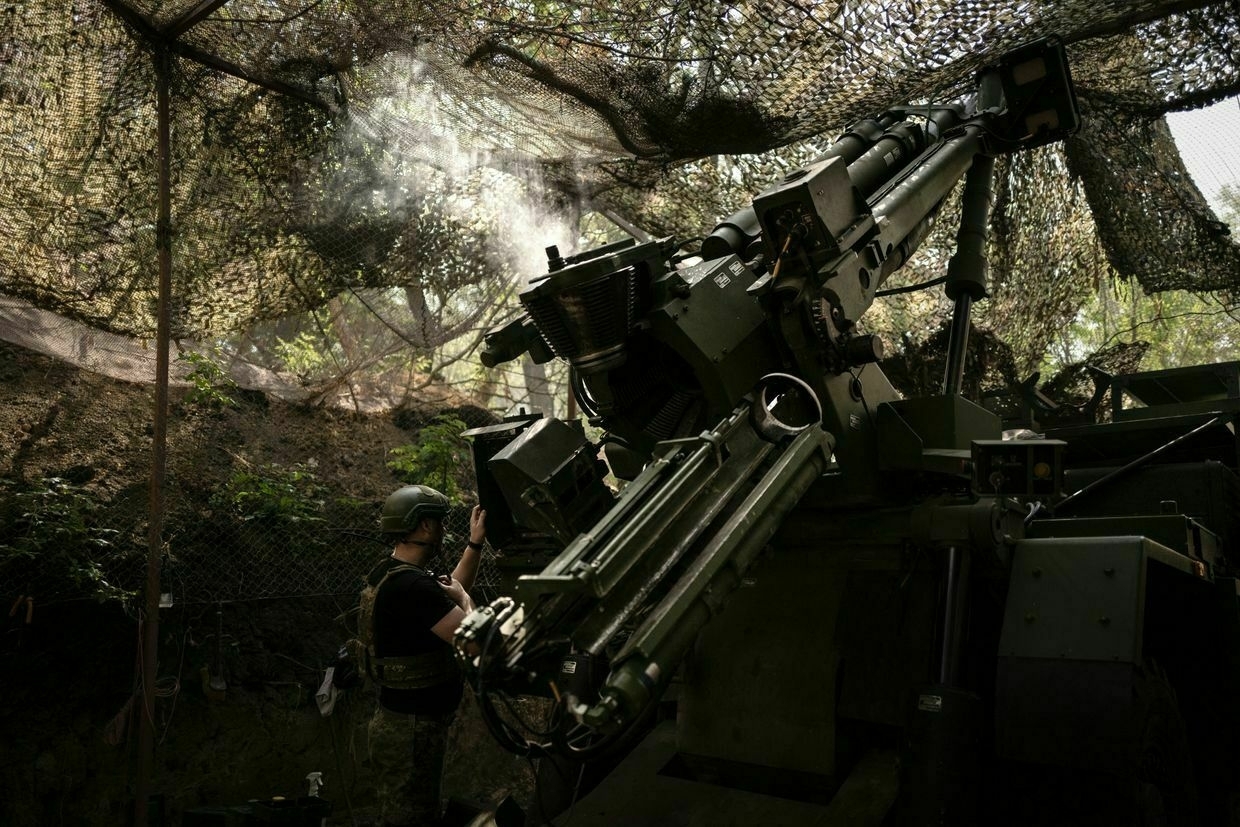
Russia has lost 1,009,330 troops in Ukraine since the beginning of its full-scale invasion on Feb. 24, 2022, the General Staff of Ukraine’s Armed Forces reported on June 20.
The number includes 1,090 casualties that Russian forces suffered just over the past day.
According to the report, Russia has also lost 10,954 tanks, 22,860 armored fighting vehicles, 52,501 vehicles and fuel tanks, 29,374 artillery systems, 1,421 multiple launch rocket systems, 1,188 air defense systems, 416 airplanes, 337 helicopters, 41,299 drones, 3,369 cruise missiles, 28 ships and boats, and one submarine.
Russian losses ‘entirely justified,’ Zelensky saysPresident Volodymyr Zelensky said on June 19 that he held talks with the SBU about deep strikes in Russia. “Russia must continue to suffer entirely justified losses due to its aggression.”The Kyiv IndependentAbbey Fenbert
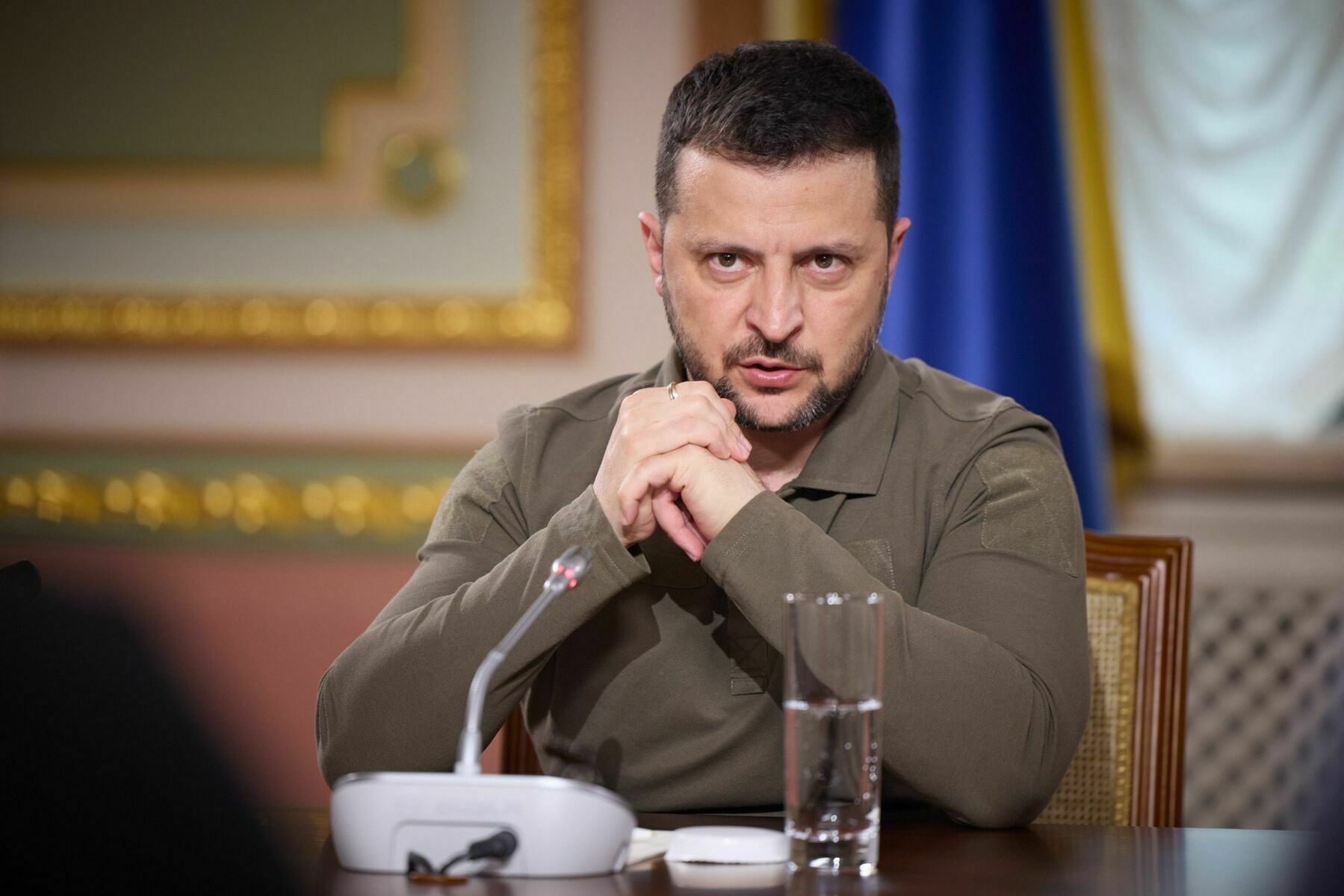
-
Latvia prohibits Russian, Belarusian citizens from purchasing real estate
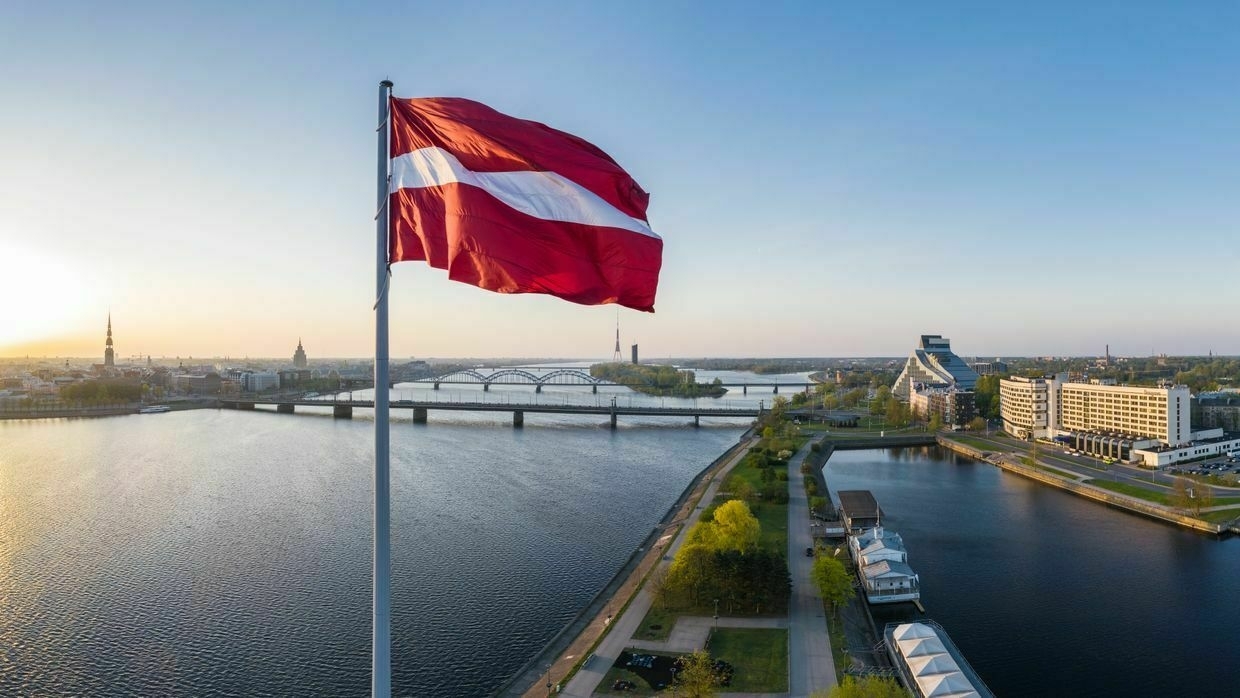
Latvia’s parliament adopted a bill on June 19 that prohibits citizens of Russia and Belarus from purchasing real estate in the country, Latvian media reported.
The bill — which carves out exceptions for EU and Latvian permanent residence holders, Belarusian refugees, and repatriates — establishes the new restrictions under the pretenses of protecting the country’s national security.
In addition to citizens, the bill prohibits entities that are at least 25% owned by Russian or Belarusian nationals from purchasing property.
“This is a step to limit the influence and presence in Latvia of persons and companies that are adverse to the country,” said Agnese Krasta, an Estonian member of parliament and one of the authors of the initiative.
Latvia, which borders both Russia and Estonia, is widely viewed as one of the most likely targets for a future Russian attack on NATO or the European Union. As the war in Ukraine continues to rage on, Latvia has taken action to increase civil preparedness measures and has drafted plans to relocate a quarter of its population in the case of war.
EU intelligence and security agencies have warned of mounting Russian sabotage operations, including several arson attacks believed to have been coordinated by Moscow.
Latvia joins Finland in imposing a ban on Russians from buying, as Baltic and Nordic countries continue to impose restrictions on Russia over its aggression in the region.
In September 2022, Latvia imposed entry restrictions on Russian citizens as part of a joint agreement with Lithuania, Estonia, and Poland.
Since the start of Russia’s full-scale invasion in 2022, Latvia has been one of Ukraine’s most vocal backers.
The Baltic state ranks among Europe’s top defense spenders, allocating over 3% of GDP to defense in 2025, according to NATO estimates.
Diplomacy in crisis: G7 letdowns reveal limits to Western solidarity on UkraineKANANASKIS, Canada — The Group of Seven (G7) Leaders’ Summit ended on June 17 with no joint statement in support of Ukraine, no commitments to provide desperately needed U.S. weapons, and no meeting between President Volodymyr Zelensky and U.S. President Donald Trump. The Ukrainian delegation headed into the summit,The Kyiv IndependentDmytro Basmat
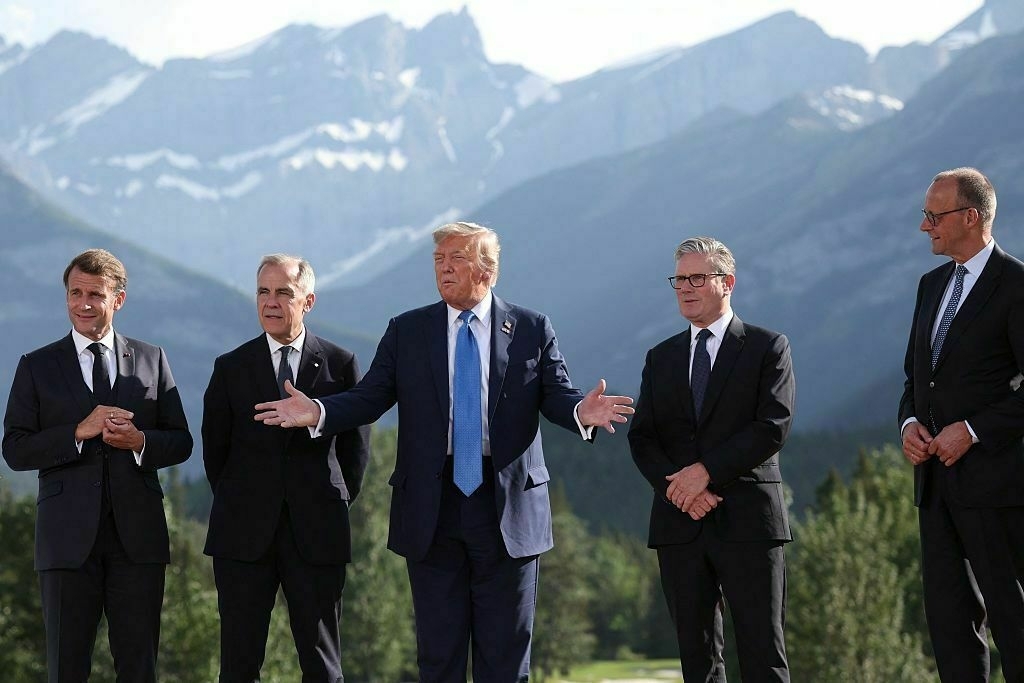
-
'Massive' Russian drone attacks on residential buildings in Odesa injure 13
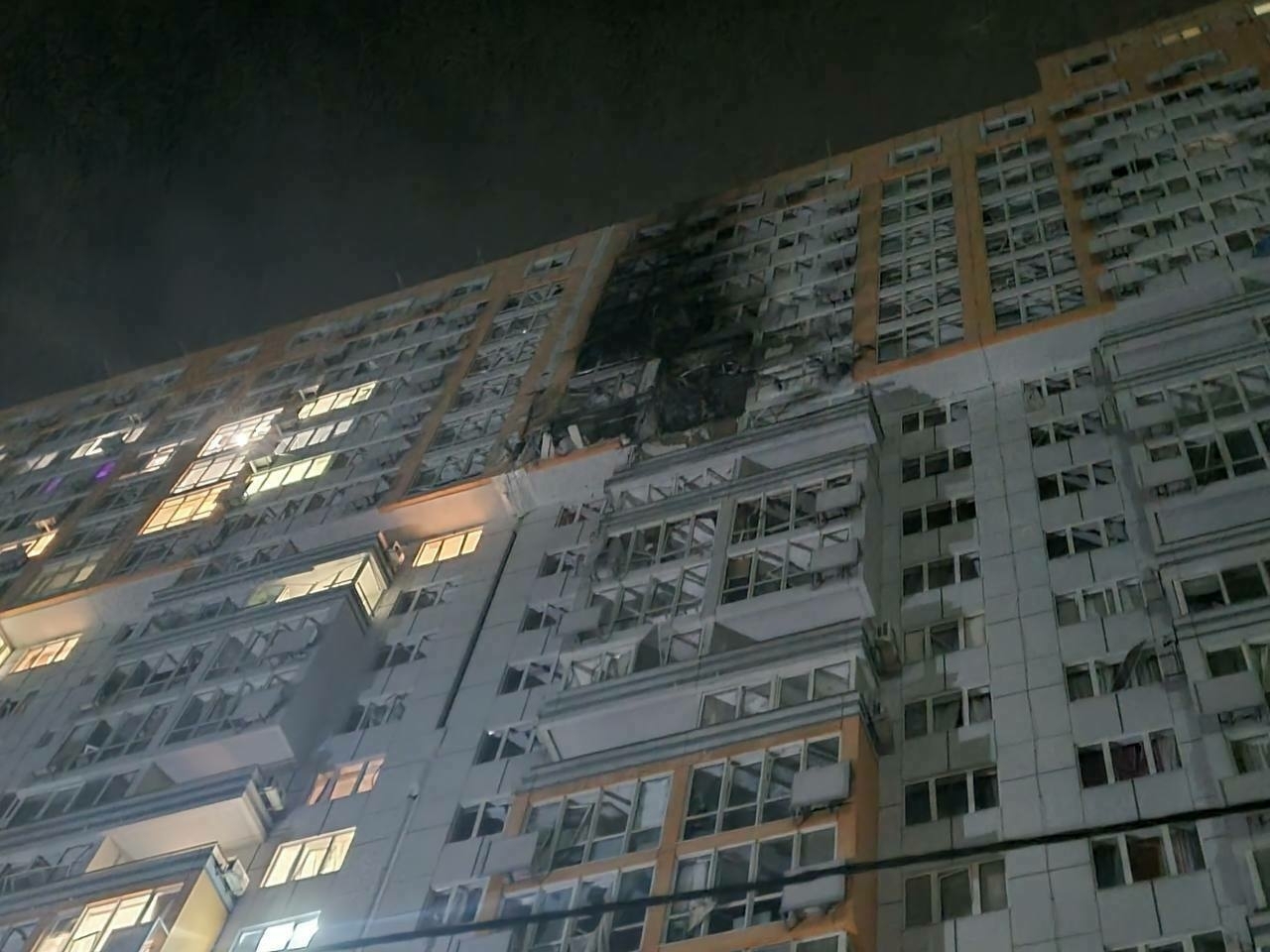
Editor’s note: This is a developing story and is being updated.
Russian forces struck residential buildings in Odesa overnight on June 20, injuring at least 13 people, including three emergency workers, Ukraine’s State Emergency Service reported.
The attack, which the service described as “massive,” rang out around 1 a.m. local time. The attack drones struck over 10 targets, including seven residential building, and led to multiple large-scale fires.
At the site of one of the attacks, a 23-story residential building caught fire between the 18th and 20th floors, and led to the evacuation of over 600 people.
In a separate attack on a four-story building within the city, three firefighters were injured when structural elements collapsed on the responders. The building is described as being “completely engulfed in flames,” according to the State Emergency Service.
The three injured firefighters are currently hospitalized in stable condition. Additional information on the attacks as well as casualties are being clarified as search efforts under rubble and debris continue.
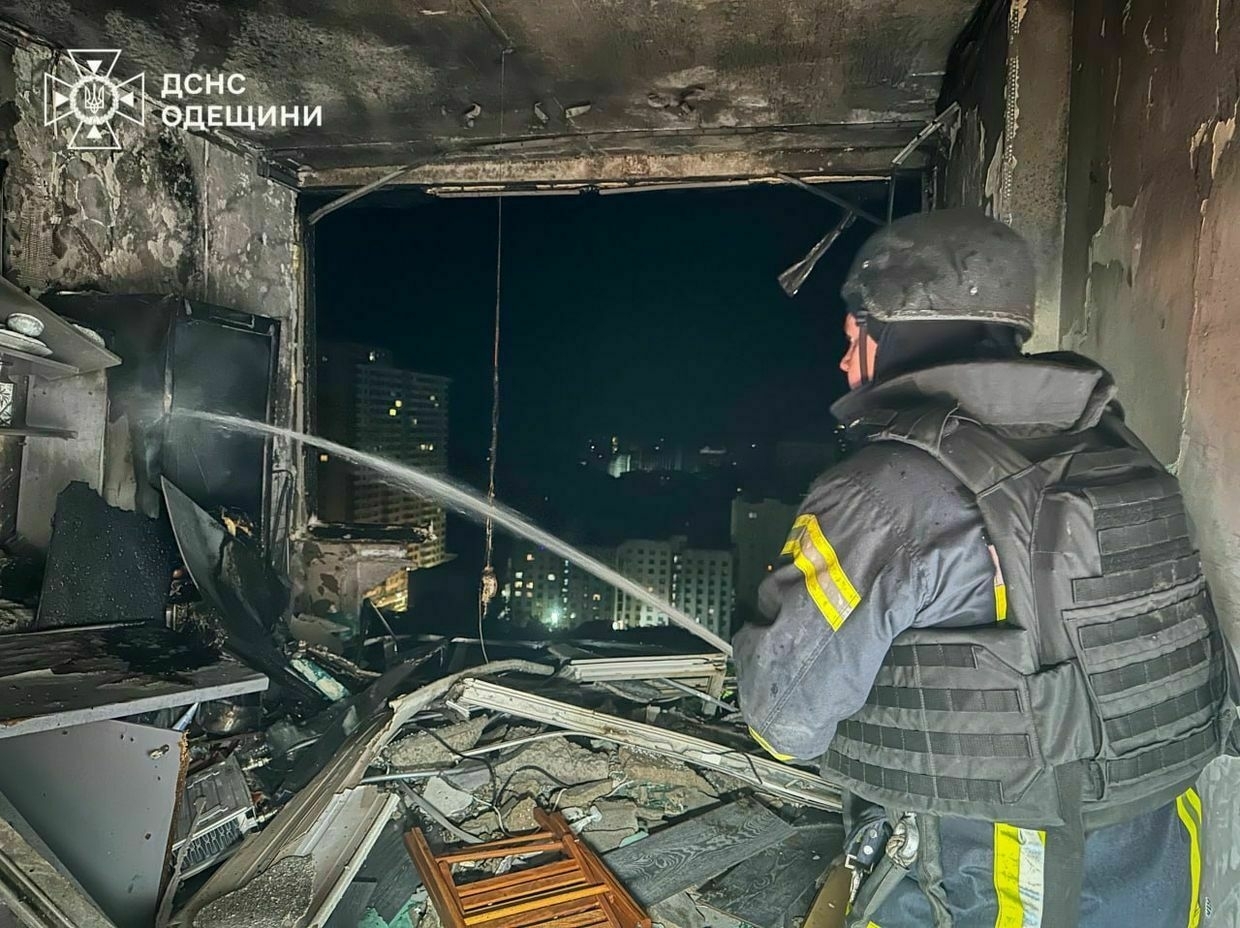
Firefighters extinguish a fire at a residential building in Odesa on June 20, 2025 following a Russian drone attack that injured at least 13 people, including three firefighters. (Ukraine State Emergency Service/Telegram) 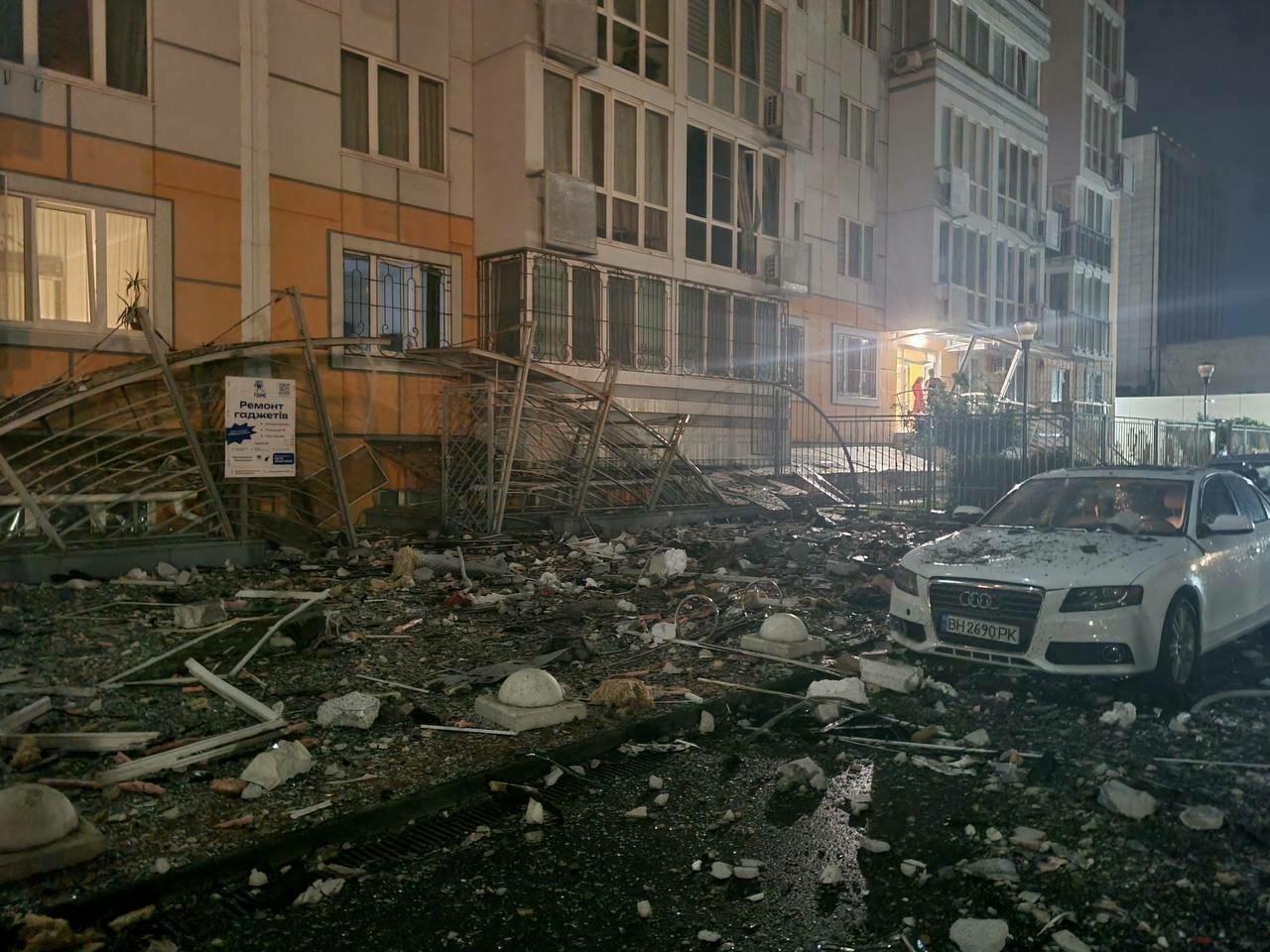
The aftermath of a Russian drone attack on a residential building in Odesa on June 20, 2025. The attacks on the city injured at least 13 people, including three firefighters. (Odesa Oblast Governor Oleh Kiper/Telegram) Odesa, a port city on Ukraine’s Black Sea coast with a population of around 1 million, has been a frequent target of Russian attacks throughout the full-scale war.
On June 10, a missile and drone attack on Odesa killed two people and injure eight.
Russia has continued to increase the frequency and severity of its attacks on Ukrainian cities, while rejecting a ceasefire in Ukraine. Overnight on June 17, Russia launched one of its largest attacks on Kyiv since the start of full-scale war in February 2022, killing 30 people and injuring 172 others.
‘A brutal strike’ — Massive Russian missile and drone attack hits Kyiv, killing 30, injuring 172At least 28 people have been killed and 134 others injured after a mass Russian missile and drone attack on Kyiv overnight on June 17.The Kyiv IndependentOlena Goncharova
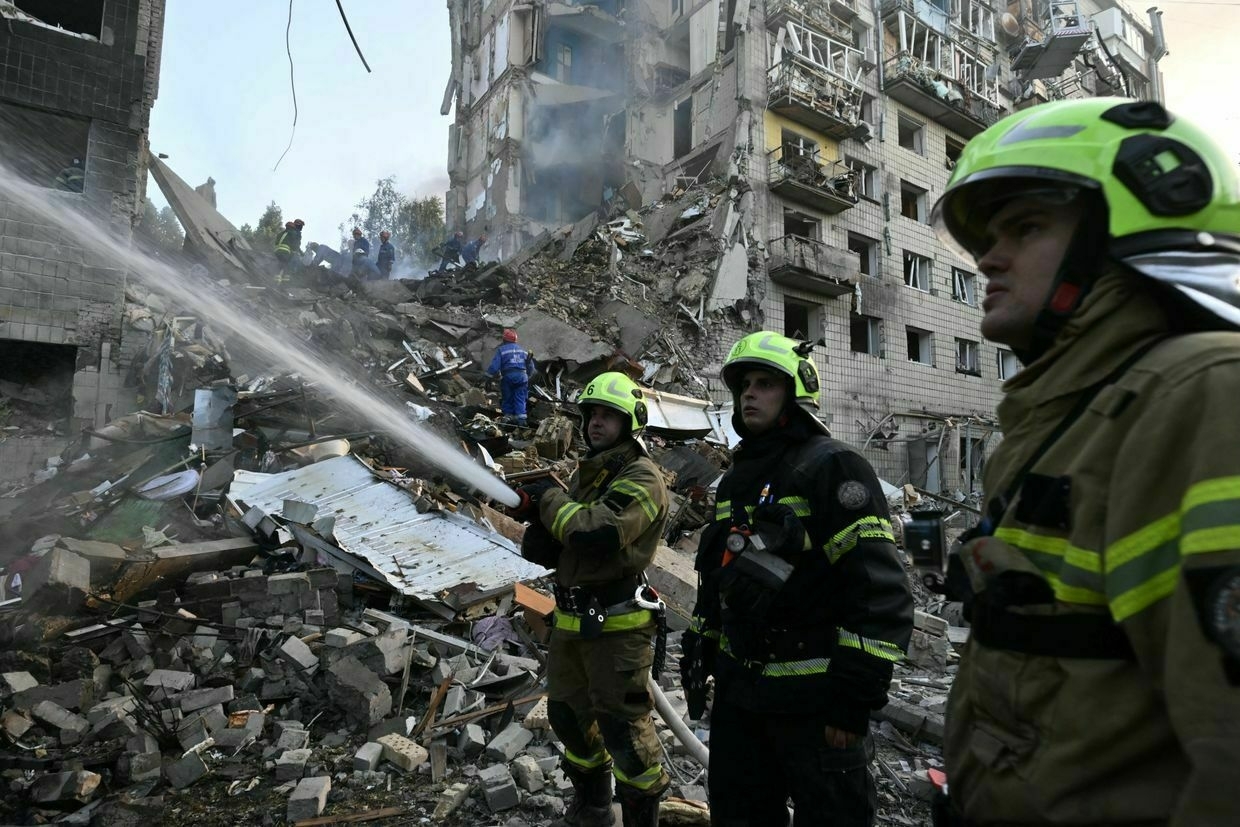
-
EU proposes integrating Ukraine into bloc's mobile roaming area
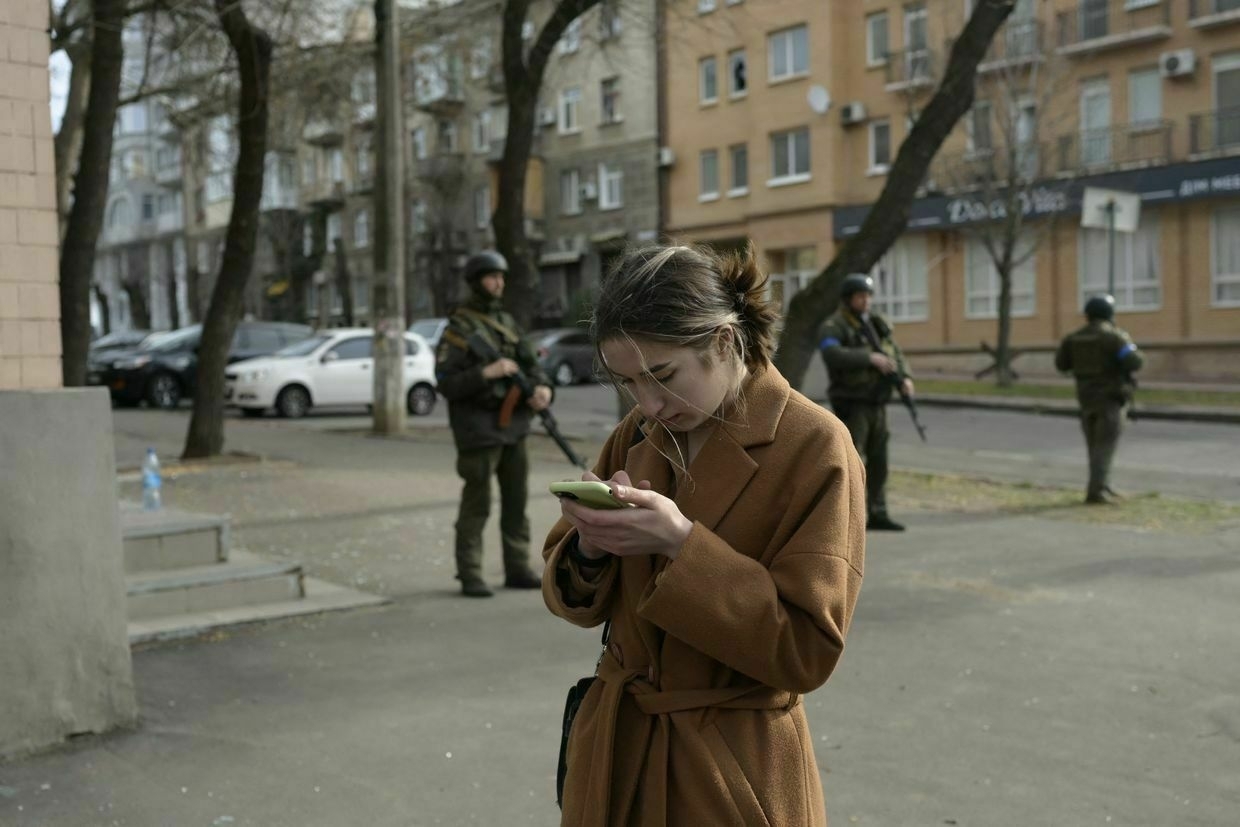
The European Commission has proposed that Ukraine join the European Union’s mobile roaming area starting January 1, 2026, providing Ukrainian users the ability to make phone calls, texts, and use mobile data in the bloc’s 27 countries at no extra charge.
“We want Ukrainian citizens to stay connected to their loved ones across the EU, as well as in their home country. That’s why we propose that Ukraine join our roaming family,” European Commission President Ursula von der Leyen said in a statement.
The proposal, first announced on June 16, will serve as a means of integration into the European Union’s “Roam like at Home” provision in affect between all EU nations. The proposed change will impact the over four million Ukrainian refugees living in the EU.
Ukraine’s full integration in the roaming provisions will replace voluntary measures that “allowed for roaming without surcharges and affordable international calls for EU and Ukrainian citizens abroad,” according to the European Commission. The current measure will extend to December 31, 2025, ahead of the planned integration.
If approved, Ukraine will become the only country outside of the EU to join the bloc’s “Roam like at Home” policy.
The move, which awaits European Council approval, comes as Ukraine continues to implement reforms in pursuing membership in the European Union.
Ukraine applied for EU membership at the onset of Russia’s full-scale invasion in 2022. The country has made quick progress, achieving candidate status within months, with the initial negotiations formally launching in June 2024.
Since the start of 2025, Ukraine has opened three negotiation clusters under Poland’s rotating presidency.
Poland lead the EU Council’s presidency until June, and Denmark will take over the role in July. Ukraine aims to open the remaining three negotiation clusters in the second half of 2025 under the Danish chairmanship, the President Volodymyr Zelensky said.
There are six accession negotiation clusters, consisting of several individual chapters. Negotiations prepare a candidate country to become an EU member.
The EU’s Commissioner for Enlargement, Oliver Varhelyi, said that Ukraine could potentially join the bloc by 2029 if it successfully implements necessary reforms.
‘I am against Ukraine’s entry into the European Union,’ Polish president-elect Nawrocki says“Ukraine must understand that other countries, including Poland, Hungary, and other European countries, also have their own interests,” Polish President-elect Karol Nawrocki said.The Kyiv IndependentVolodymyr Ivanyshyn
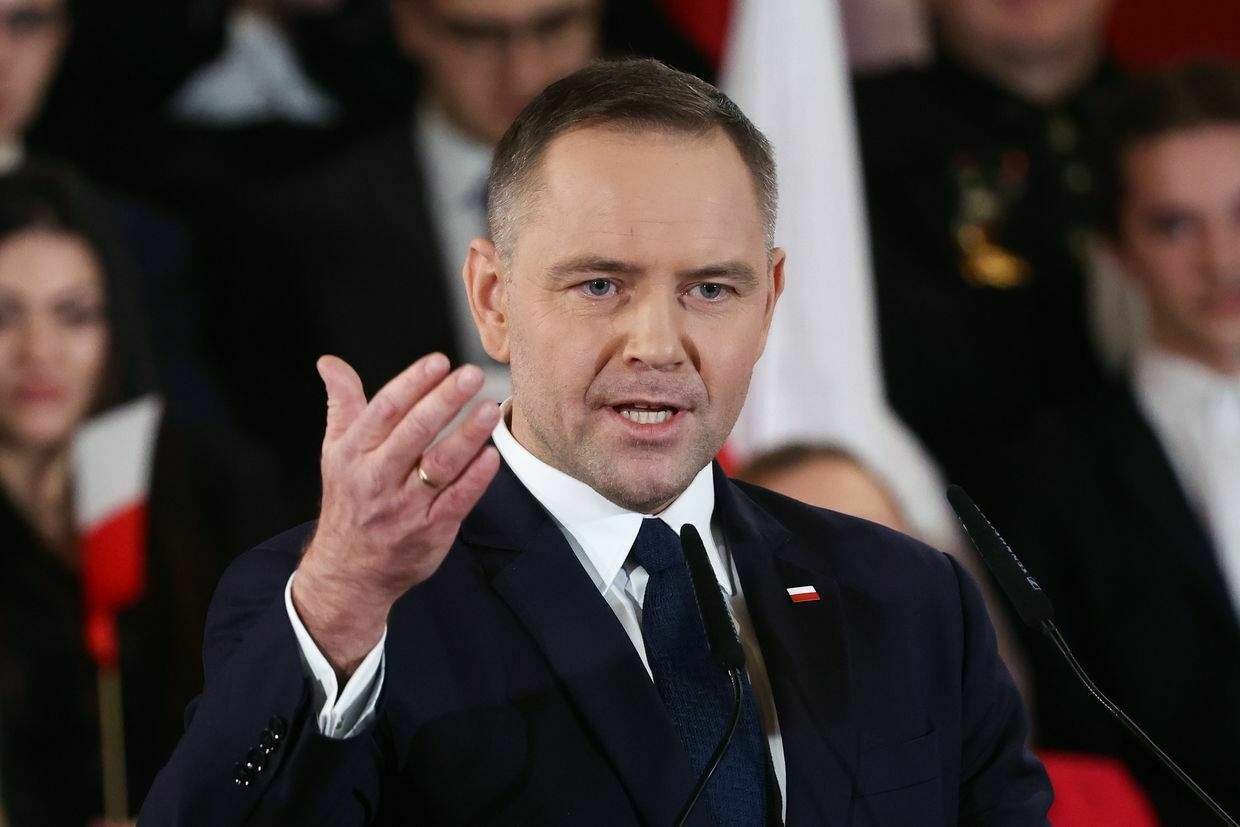
-
Russian losses 'entirely justified,' Zelensky says
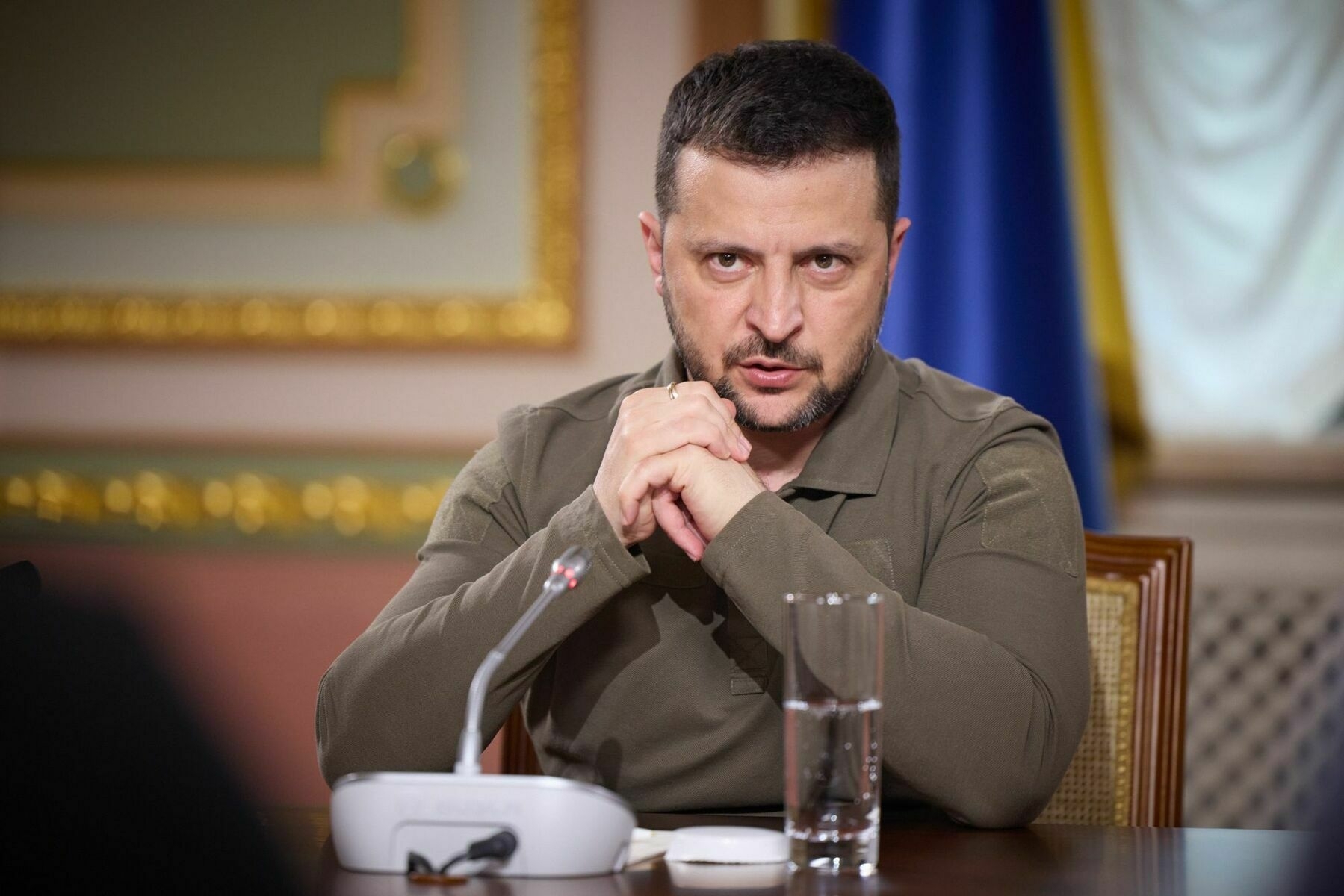
Ukraine should continue to inflict “entirely justified” losses on Russia in the face of escalating aggression, President Volodymyr Zelensky said in his evening address on June 19.
His remarks come two days after Russia launched one of its deadliest assaults on Kyiv, attacking the capital with ballistic missiles and hundreds of drones on June 17 in a nine-hour attack that killed 30 people and injured 172 others.
“There was no military sense in this strike; it added absolutely nothing to Russia in military terms,” Zelensky said, refuting Moscow’s claims that the attack targeted Ukraine’s “military-industrial complex.”
The president described Russia’s attack — which struck residential buildings, student dorms, and a kindergarten — as “deliberate terror.”
Zelensky urged Western partners to mount economic pressure on Russia and said he was working on new proposals for coordinated sanctions. He also said he held meetings with the Security Service of Ukraine (SBU) to discuss deep strikes in Russia.
“Russia must continue to suffer entirely justified losses due to its aggression,” he said.
While Russia has intensified its campaign of aerial terror against Ukrainian cities, Kyiv has stepped up its efforts to reduce Russia’s military capabilities, launching successful strikes on airfields, weapons factories, and oil refineries.
The most audacious of these attacks was the large-scale Operation Spiderweb, a coordinated drone strike on four key Russian military airfields on June 1. According to the SBU, the operation damaged 41 Russian warplanes, including heavy bombers and rare A-50 spy planes.
Since March, Ukraine has repeatedly offered to declare an unconditional ceasefire if Russia agrees to the same terms. The Kremlin has resisted at every turn. U.S. President Donald Trump’s attempts to broker a peace deal have led to continued escalation and more civilian deaths.
With Western support eroding and no ceasefire in sight, Ukraine continues grasping for leverage against Moscow — including by developing its own long-range weapons. Kyiv has developed several weapons capable of deep strikes in Russian territory, such as the Palianytsia and Peklo (Hell) missile-drone hybrids.
Ukraine has proven its ability to strike targets far from the border. A June 15 attack reportedly hit a drone factory in Russia’s Tatarstan, around 1,000 kilometers (620 miles) from Ukraine.
Russia also continues to suffer staggering troop losses on the front lines. Earlier on June 19, Russian Ambassador to the U.K. Andrey Kelin accidentally admitted that Moscow is rapidly losing personnel in Ukraine during an interview with CNN.
According to figures from Kyiv, Russia has suffered more than 1 million dead, wounded, and missing soldiers since the start of its full-scale invasion.
Ukraine war latest: Russia accidentally admits to its staggering troop losses in UkraineKey developments on June 19: * Russia accidentally admits to its staggering troop losses in Ukraine * Ukraine, Russia carry out another POW exchange under Istanbul deal * North Korea considers sending 25,000 workers to Russia to help produce Shahed drones, media reports * Zelensky appoints Brigadier General Shapovalov as new Ground ForcesThe Kyiv IndependentThe Kyiv Independent news desk
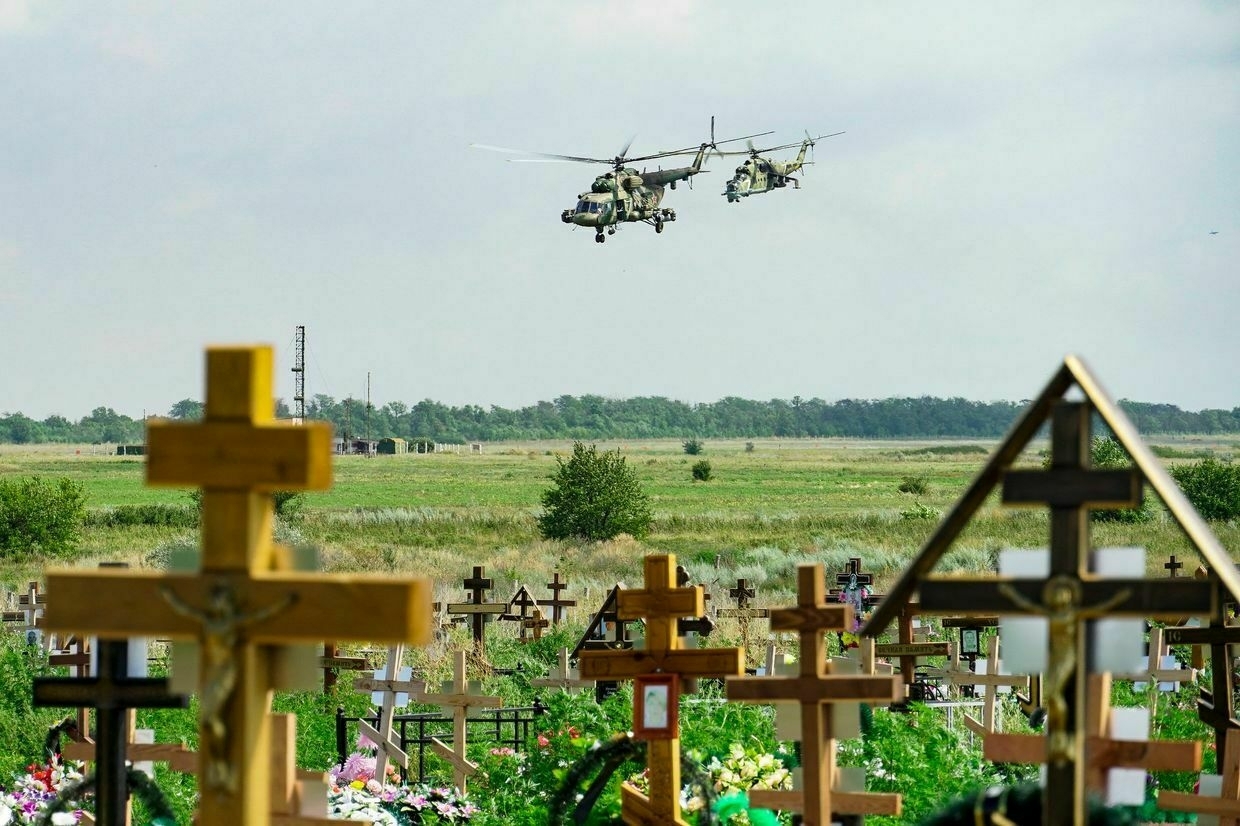
-
Trump administration doesn't like working with Zelensky's top aide, Politico reports
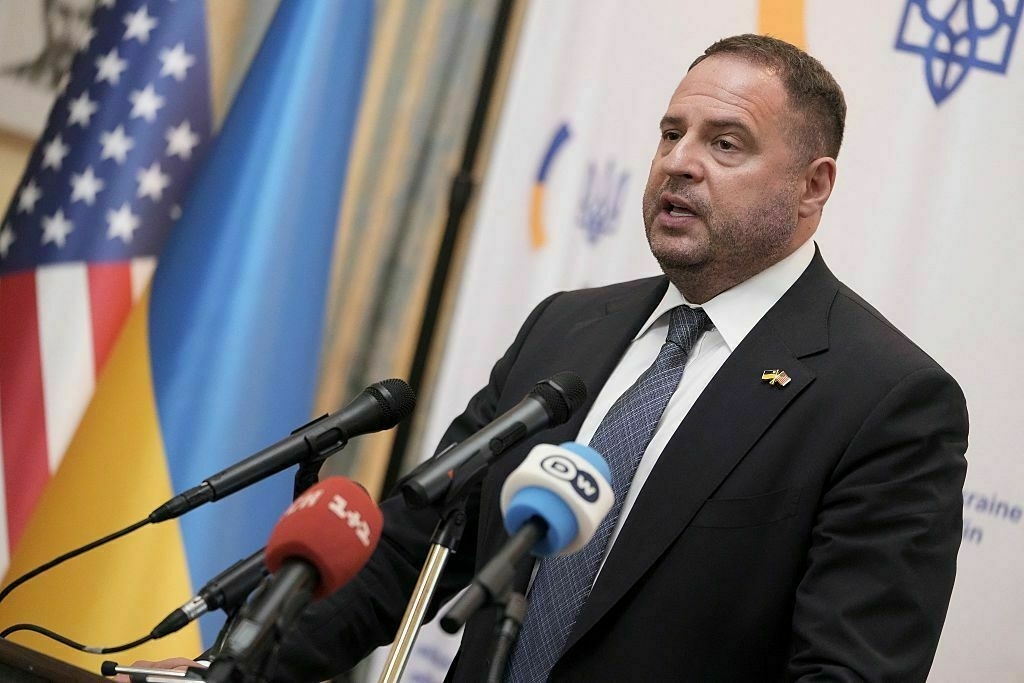
Officials in Washington are frustrated with the diplomatic efforts of Andriy Yermak, head of Ukraine’s Presidential Office, and believe he may be undermining Ukraine’s efforts to win favor with U.S. President Donald Trump, Politico reported on June 19.
Yermak, President Volodymyr Zelensky’s close friend and chief adviser, has represented Ukraine’s interests in Washington since Russia’s full-scale invasion in 2022.
According to 14 people who spoke to Politico, including U.S. and Ukrainian officials, many people in Washington find Yermak abrasive and uninformed, and fear that he is inaccurately conveying U.S. positions to Zelensky. While the Biden administration was willing to cooperate with Yermak, the Trump team is less accommodating — and more likely to rescind support for Ukraine.
“All the people (in the U.S.) who want to withdraw and abandon Ukraine are thrilled to have Yermak around,” one person told Politico.
One person familiar with the situation described Yermak as a “bipartisan irritator” who also frustrated officials under U.S. President Joe Biden. The former administration, however, did not find Yermak’s personality a valid reason to withdraw military and humanitarian aid from a key ally defending itself from an all-out war.
Trump’s stance on Ukraine has been less supportive from the beginning. Since his inauguration in January, he has refused to approve new military aid packages for Kyiv or impose additional sanctions against Moscow. He has pursued warmer ties with Russia and criticized Zelensky more frequently and harshly than Russian President Vladimir Putin.
Any hopes Ukraine has of winning over Trump may be jeopardized by the administrations tense relationship with Yermak, Politico’s sources suggested.
During Yermak’s most recent visit to Washington, a last-minute trip in early June, he reportedly struggled to land meetings with Trump officials. One person familiar with the visit described Yermak as an “existential liability for Ukraine.”
Sources described Yermak as overly demanding and ignorant of U.S. politics and processes. One person accused Yermak of acting as if Ukraine was the “center of the world” and said his attitude “has already affected the relationship (with Trump)."
In a statement to Politico, Yermak said he was doing everything in his power to protect and support Ukraine.
“If that means being considered ‘challenging’ by others — so be it,” he said.
“I will wait many more hours outside any door if that helps my country and my president’s mission. I have no ambition to fully grasp how American politics works — I come to speak about the country I know best: Ukraine."
Once firm, support for Ukraine among its neighbors wavers amid a populist surgeFourth year into Russia’s full-scale war against Ukraine, the decisive support Kyiv found among its neighbors to the west is beginning to show cracks. Once resolute Poland is seeing rising skepticism toward Ukraine, underscored by President-elect Karol Nawrocki’s election victory. Slovakia’s pro-Ukrainian government was ousted by Russian-friendly populists in theThe Kyiv IndependentMartin Fornusek
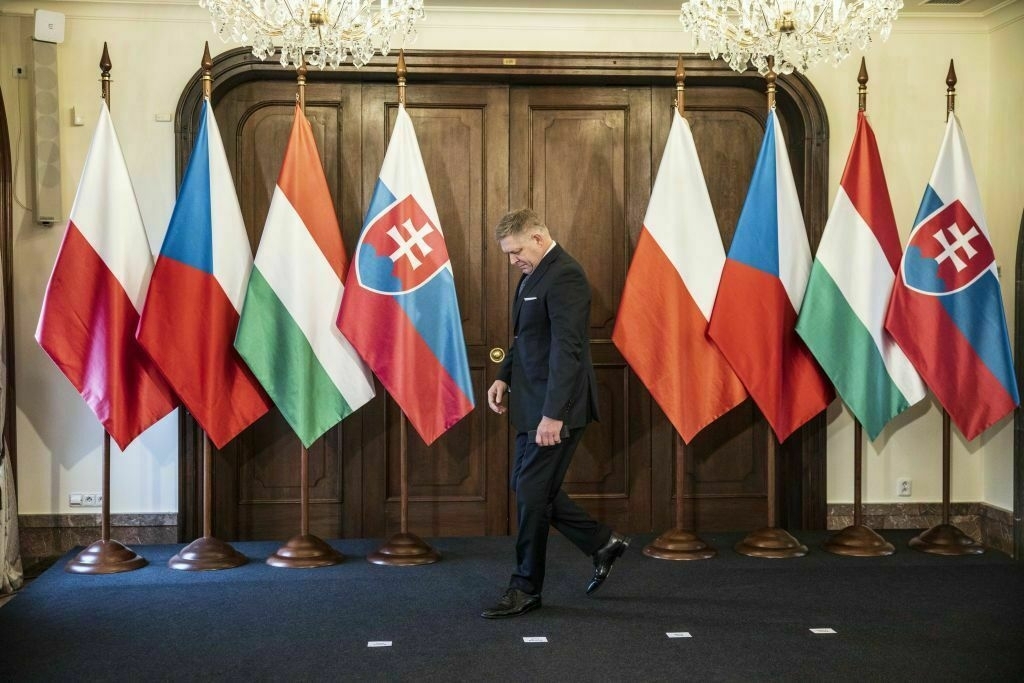
-
American volunteer killed in June 17 attack becomes 1st US civilian victim of Russian strike in Ukraine, NYT reports

Fred Grandy, a 62-year-old American artist and volunteer who was killed in Russia’s mass missile attack against Kyiv on June 17, appears to be the first U.S. civilian killed by a Russian strike on Ukraine, the New York Times (NYT) reported on June 19.
Russia launched a massive assault on Kyiv overnight on June 17, pounding the capital with hundreds of kamikaze drones and multiple missiles in a nine-hour attack that left 28 dead and around 140 injured.
Among the vicitms was Grandy, a U.S. citizen who arrived in Kyiv in May to volunteer to clear away rubble after Russian attacks. He had hoped to volunteer in Ukraine for five or six months, his sister told the NYT.
“He was a person who wanted to make a difference so badly,” Grandy’s sister Siestka Reed said. “I talked to him about five days ago, and he told me that he felt he was right where he should be."
During the attack, Kyiv Mayor Vitali Klitschko reported that a 62-year-old U.S. citizen had died near one of the attack sites, but the details of their death remained unclear. The U.S. State Department and Ukrainian authorities later confirmed that a U.S. citizien had been killed, the NYT reported.
According to Ukrainian authorities, Grandy died after sustaining shrapnel wounds.
Before arriving in Kyiv, Grandy had worked as a bartender, bouncer, and builder. He was also an artist, fashioning bird houses and planters out of reclaimed wood and flowers out metal. According to his family, his desire to volunteer in Ukraine stemmed from his dismay at U.S. Presidend Donald Trump’s lack of support for Kyiv.
Grandy was upset by Trump’s treatment of President Volodymyr Zelensky and withdrawal of military support, Reed told the NYT.
“He thought, you just don’t let a bully do that stuff, and you don’t just abandon people,” Reed said.
“Then he saw how hard they fought to save their country, or are fighting still. It was just hard to understand walking away, you know? And he just believed that people need a hand up."
Russian drone and missile attacks are not new, but in May and June, mass strikes on civilian targets surged. Russia has launched a number of record-breaking attacks on Ukrainian cities in recent weeks, resulting in hundreds of casualties.
Moscow’s escalating aerial assaults have even directly harmed U.S. enterprises and individuals. An office used by the U.S. aerospace and defense giant Boeing was hit in a mass strike on Kyiv launched overnight June 9-10. The Financial Times (FT) reported that Russia deliberately targeted the site.
Grandy’s death marks the first time a U.S. civilian has been killed in a Russian aerial attack against Ukraine.
Meanwhile, Trump’s interest in securing a ceasefire in Ukraine appears to have fizzled out. He left the G7 Leaders Summit in Canada early, jettisoning a much-anticipated meeting with Zelensky, and barely responded to the mass attack on Kyiv.
Trump refuses to sanction Russia and is reportedly obstructing congressional efforts to toughen sanctions on Russian oil profits.
Trump’s peace push falters in both Ukraine and the Middle East — for similar reasonsU.S. President Donald Trump addressed a wide range of subjects during his inauguration speech. When speaking about international relations, he was adamant — “Our power will stop all wars and bring a new spirit of unity,” he said, talking about Russia’s war against Ukraine and the fighting in the MiddleThe Kyiv IndependentOleg Sukhov
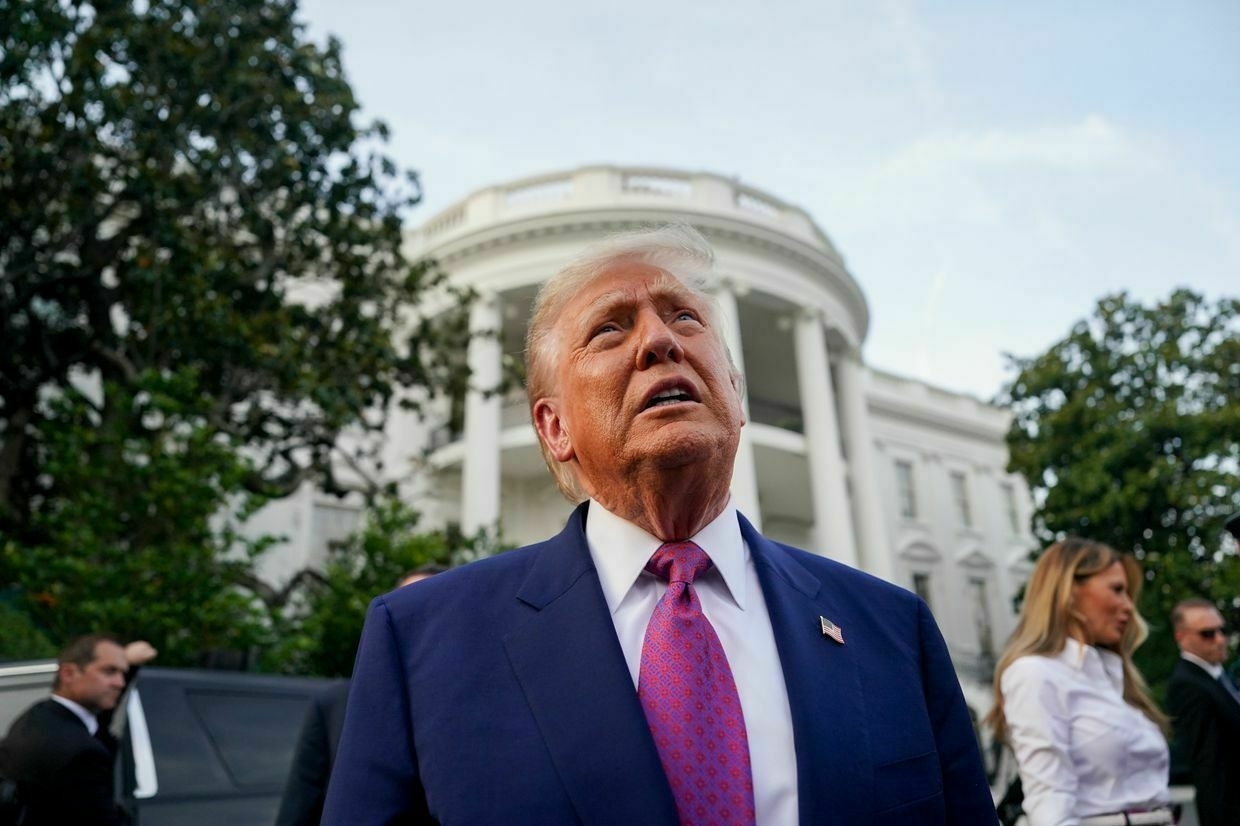
-
Ukraine war latest: Russia accidentally admits to its staggering troop losses in Ukraine
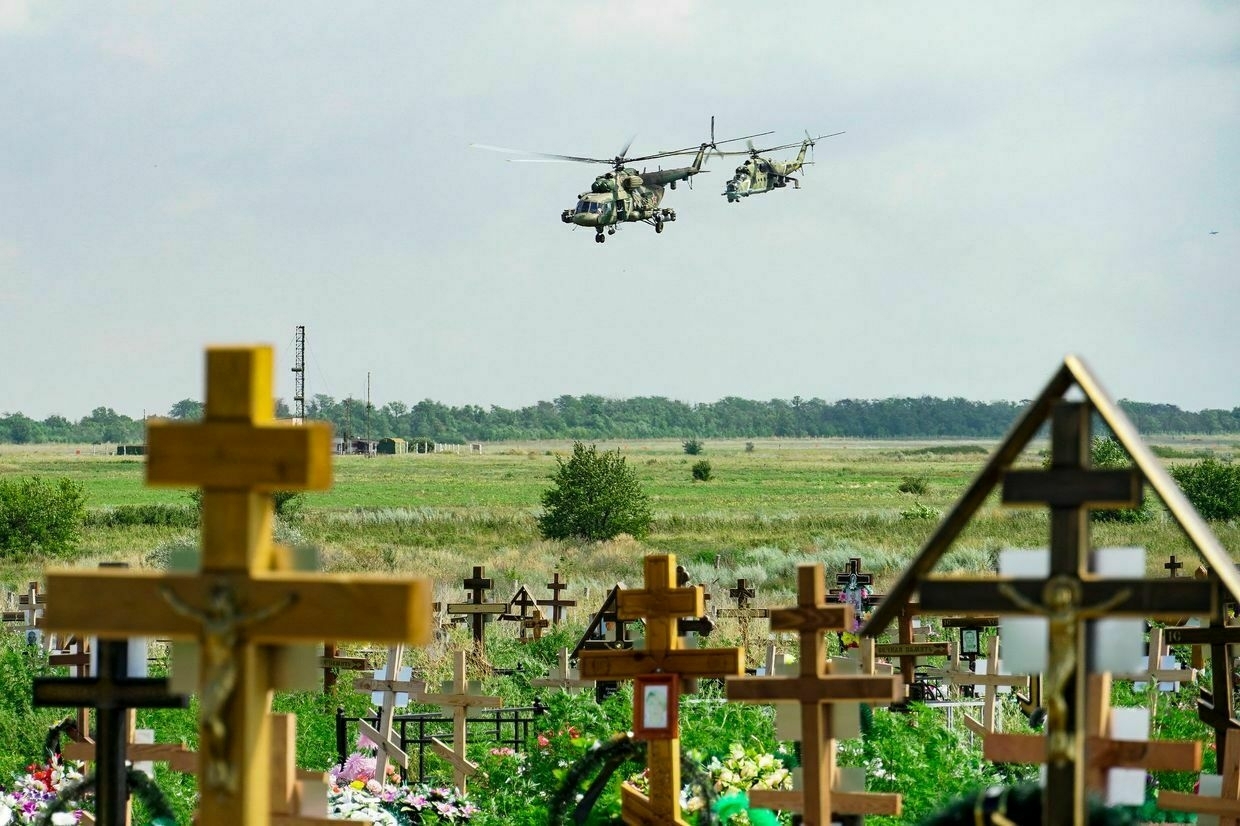
Key developments on June 19:
- Russia accidentally admits to its staggering troop losses in Ukraine
- Ukraine, Russia carry out another POW exchange under Istanbul deal
- North Korea considers sending 25,000 workers to Russia to help produce Shahed drones, media reports
- Zelensky appoints Brigadier General Shapovalov as new Ground Forces chief
- ‘Unwanted by their homeland’ — Ukraine confirms Russia returned bodies of its soldiers disguised as Ukrainian
A senior Russian official on June 19 inadvertently confirmed the staggering troop losses incurred by Moscow’s forces during its full-scale invasion of Ukraine.
In an interview with CNN, Russian Ambassador to the U.K. Andrey Kelin was asked about Moscow’s maximalist intentions in Ukraine and its ability to recruit enough soldiers to fulfill them.
Despite ongoing U.S.-led peace efforts, Russia continues to demand Ukraine withdraws from the four partially occupied regions — Donetsk, Luhansk, Kherson, and Zaporizhzhia — as a precondition for negotiations.
Meanwhile, according to figures from Kyiv, Russia has suffered more than 1 million dead, wounded, and missing soldiers since the start of its full-scale invasion.
Kelin dismissed the 1 million casualties figure but did confirm that “about 600,000” Russian soldiers were fighting in Ukraine, a number which tallies with Ukrainian estimates from January.
The number is actually lower than the 700,000 (Russian President Vladimir) Putin claimed in June 2024, and the 617,000 he claimed in December 2023.
Kelin was then asked about Russian army recruitment.
“I’m not a specialist in this area, but as I understand it we have 50-60,000 a month, those volunteers who are coming, recruiting, posting, and they would like to get engaged in this thing (in Ukraine),” he replied.
He did not explain why the size of the Russian army fighting in Ukraine has gone down despite what would amount to around 250,000 extra troops being recruited and sent to the front since the beginning of the year.
According to figures from Ukraine’s General Staff, Russia has lost 217,440 troops since Jan. 1, 2025.
The discrepancy tallies with Western analysis of Russia’s staggering losses.
“They lose somewhere in the ballpark of 35,000 to 45,000 people per month, and perhaps they recruit a little bit north of that number,” George Barros, Russia team lead at the Institute for the Study of War (ISW), told the Kyiv Independent earlier this month.
Trump’s peace push falters in both Ukraine and the Middle East — for similar reasonsU.S. President Donald Trump addressed a wide range of subjects during his inauguration speech. When speaking about international relations, he was adamant — “Our power will stop all wars and bring a new spirit of unity,” he said, talking about Russia’s war against Ukraine and the fighting in the MiddleThe Kyiv IndependentOleg Sukhov
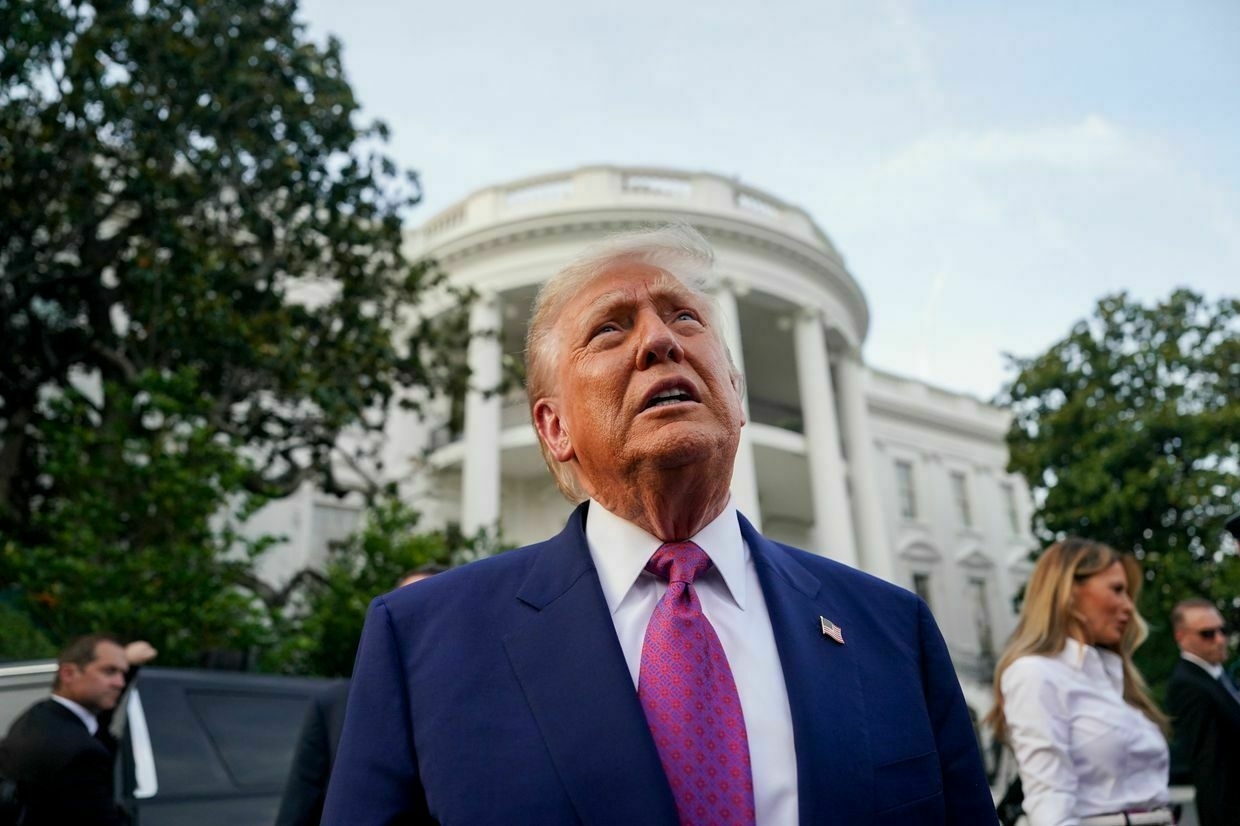
Ukraine, Russia carry out another POW exchange under Istanbul dealUkraine has brought home a group of soldiers released from Russian captivity, President Volodymyr Zelensky announced on June 19, marking yet another in a recent series of exchanges with Moscow.
“These are warriors of the Armed Forces, the National Guard, and the State Border Guard Service. Most of them had been held captive since 2022,” Zelensky said, without revealing their number.
The exchange follows four similar swaps carried out last week in accordance with Ukraine-Russia agreements reached at peace talks in Istanbul on June 2.
0:00/Ukrainian service members released from Russian captivity under a prisoner exchange on June 19, 2025. (Ukraine’s Coordination Headquarters for the Treatment of the POWs) As in the other recent cases, the latest swap focused on severely ill and wounded prisoners of war (POWs), Ukraine’s Coordination Headquarters for the Treatment of POWs said.
“We are working to bring our people back. I thank everyone who helps make these exchanges possible. Our goal is to free every single one of them,” Zelensky said.
Russia’s Defense Ministry also announced a prisoner exchange with the Ukrainian side, without specifying the number of soldiers involved.
“Every defender released today has serious medical diagnoses and illnesses resulting from their injuries and captivity,” the Coordination Headquarters said.
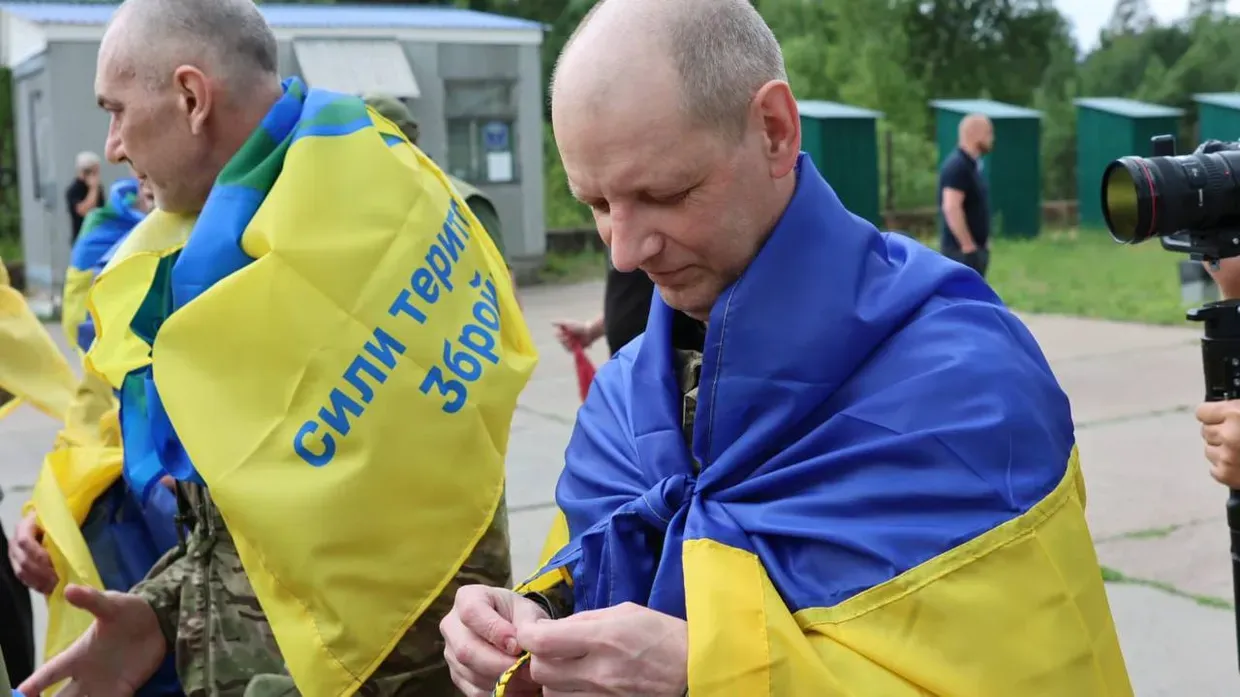
Ukrainian soldiers after being released from Russian captivity on June 19, 2025. (President Volodymyr Zelensky/Telegram) 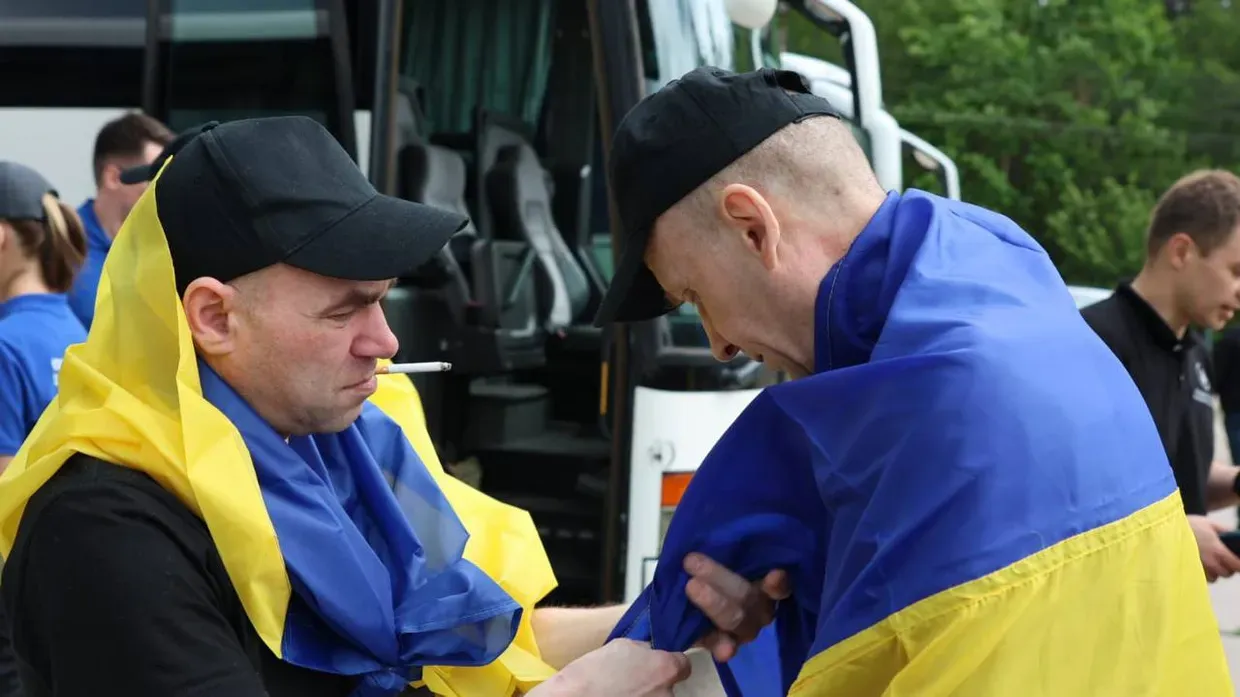
Ukrainian soldiers after being released from Russian captivity on June 19, 2025. (President Volodymyr Zelensky/Telegram) A significant part of the released captives defended Mariupol during the Russian siege in 2022, while others fought elsewhere in the Donetsk, Luhansk, Kherson, Kharkiv, Sumy, Chernihiv, Zaporizhzhia, and Kyiv oblasts. All of them are privates or non-commissioned officers.
The oldest of the released captives was 63 years old, Ombudsman Dmytro Lubinets said, adding that another, a 45-year-old service member, was released on his birthday.
The Istanbul deal was reached during the second round of direct talks between the Ukrainian and Russian delegations in Istanbul at the beginning of the month.
While no political breakthrough was achieved, both sides agreed to a phased exchange of prisoners and the repatriation of fallen soldiers' bodies. As part of that agreement, Russia pledged to return the bodies of up to 6,000 Ukrainian service members and citizens.
Moscow has handed over 6,057 bodies to Ukraine in several stages over the past few days. Kyiv later said these also included fallen Russian soldiers.
The June 2 agreements came after the largest-ever POW swap in late May, when 1,000 prisoners were exchanged on each side.
Ukraine repeatedly called for a prisoner exchange in an all-for-all format, but Russia continues to reject the offer.
Once firm, support for Ukraine among its neighbors wavers amid a populist surgeFourth year into Russia’s full-scale war against Ukraine, the decisive support Kyiv found among its neighbors to the west is beginning to show cracks. Once resolute Poland is seeing rising skepticism toward Ukraine, underscored by President-elect Karol Nawrocki’s election victory. Slovakia’s pro-Ukrainian government was ousted by Russian-friendly populists in theThe Kyiv IndependentMartin Fornusek
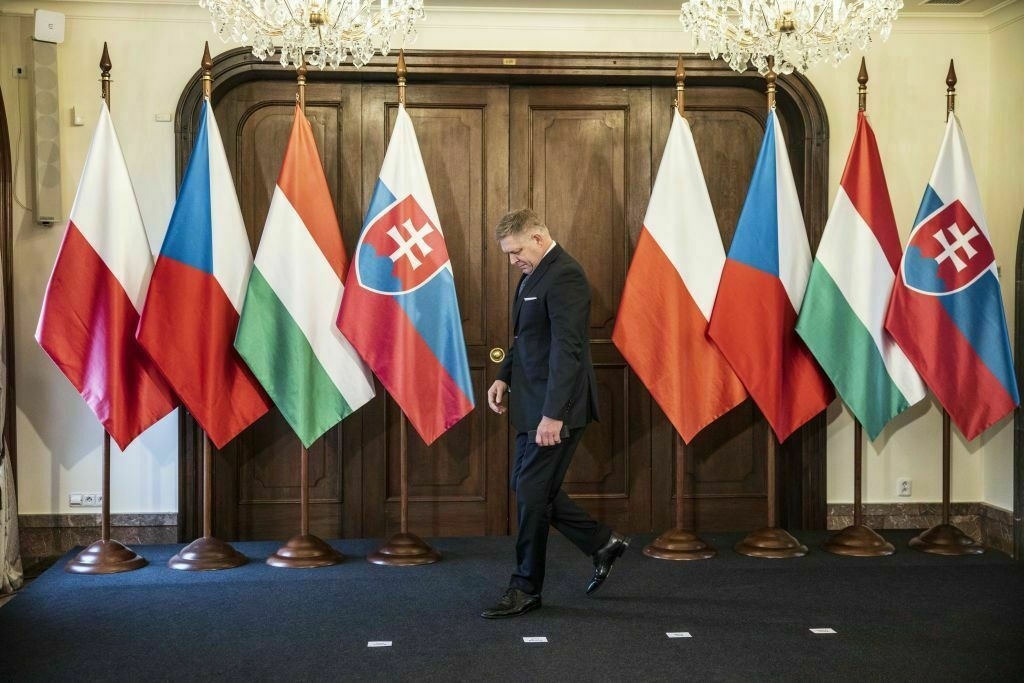
Zelensky appoints Brigadier General Shapovalov as new Ground Forces chiefPresident Volodymyr Zelensky on June 19 appointed Brigadier General Hennadii Shapovalov as the new commander of Ukraine’s Ground Forces, following the resignation of Mykhailo Drapatyi earlier this month.
Drapatyi stepped down on June 1 after a Russian missile strike killed at least 12 Ukrainian soldiers at a training ground in Dnipropetrovsk Oblast. He described the casualties as young recruits who “should have learned, lived, and fought — not died."
Zelensky accepted Drapatyi’s resignation and appointed him Commander of the Joint Forces on June 3. An investigation into the incident is ongoing, with the Ground Forces promising accountability if misconduct or negligence is confirmed.
Shapovalov, born in 1978 in Kirovohrad Oblast, is a career officer who graduated from the Military Institute of Tank Troops in Kharkiv and later studied at the National Defense University of Ukraine. He also received training at the U.S. Army War College.
Shapovalov previously led Ukraine’s South Operational Command in 2024 and was appointed in February 2025 as Ukraine’s representative to the NATO Security Assistance and Training for Ukraine (NSATU) mission in Germany.
Drapatyi, in his final remarks as Ground Forces chief on June 11, said he had overhauled more than half of the command’s senior leadership, launched a revamp of recruitment centers, and pushed through reforms focused on decentralization, accountability, and modernization.
Zelensky said Drapatyi’s new role would allow him to focus “exclusively on combat issues” as Ukraine faces intensifying Russian attacks across several fronts.
Diplomacy in crisis: G7 letdowns reveal limits to Western solidarity on UkraineKANANASKIS, Canada — The Group of Seven (G7) Leaders’ Summit ended on June 17 with no joint statement in support of Ukraine, no commitments to provide desperately needed U.S. weapons, and no meeting between President Volodymyr Zelensky and U.S. President Donald Trump. The Ukrainian delegation headed into the summit,The Kyiv IndependentDmytro Basmat
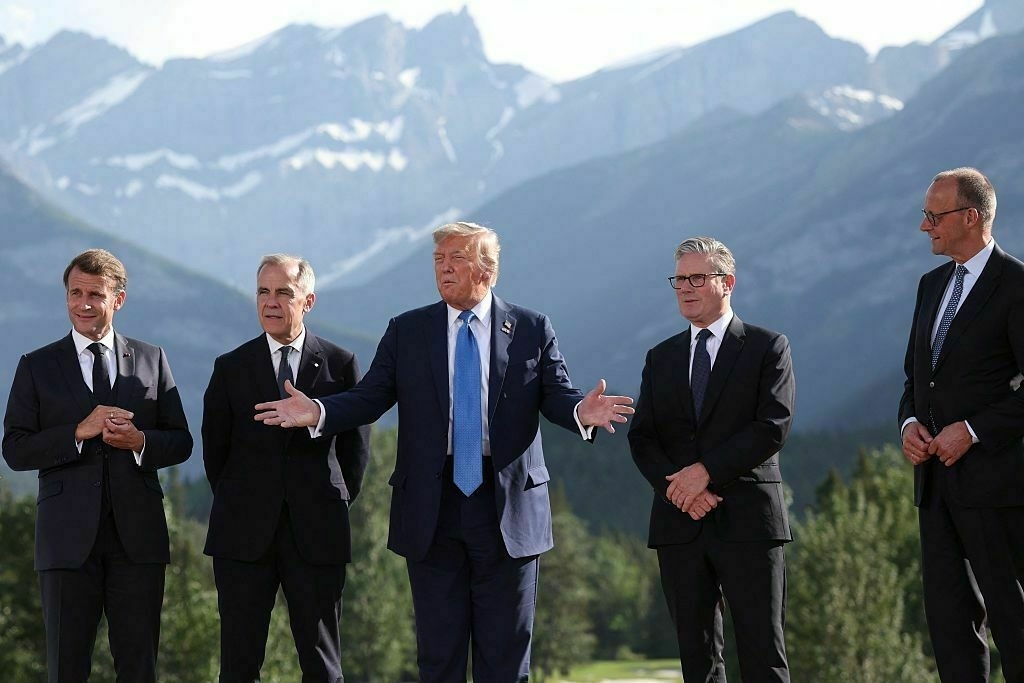
North Korea considers sending 25,000 workers to Russia to help produce Shahed drones, media reportsNorth Korea is considering sending up to 25,000 workers to Russia to assist in the mass production of Shahed-type attack drones, Japan’s public broadcaster NHK reported on June 19, citing unnamed diplomatic sources in the West and Russia.
The workers would be sent to the Alabuga Special Economic Zone in Russia’s Republic of Tatarstan, where Moscow operates a facility for assembling Iranian-designed Shahed drones. In return, Pyongyang is reportedly seeking drone operation training.
Shahed drones, known for their low cost and heavy explosive payloads, have been used extensively by Russia since late 2022 to attack Ukrainian cities. The Alabuga site has been repeatedly struck by Ukrainian forces in an attempt to disrupt production.
The media report follows a series of rapid developments in military cooperation between Moscow and Pyongyang. Russian Security Council Secretary Sergei Shoigu visited North Korea on June 17, reportedly on a “special assignment” from Russian President Vladimir Putin.
After meeting Kim, Shoigu said that Pyongyang had agreed to send 1,000 combat engineers and 5,000 military builders to Russia’s Kursk Oblast to assist in reconstruction.
Ukraine controlled a part of Kursk Oblast following a cross-border offensive in August 2024. Russia regained much of the lost territory during a March 2025 counteroffensive that included backing from North Korean forces. According to estimates, North Korea has suffered over 6,000 casualties during the offensive operations.Ukraine’s military intelligence chief, Kyrylo Budanov, said on June 9 that Pyongyang and Moscow have agreed to start establishing domestic production of Shahed-136 drones on North Korean soil.
Kim remains a vocal ally of Putin, supplying not only soldiers but also artillery, drones, and ballistic missiles. During Russia’s May 9 Victory Day Parade in Moscow, Putin personally greeted North Korean troops, though Kim did not attend.
Tired of military aid delays, Ukraine has designed its own ballistic missile — and it’s already in mass-productionUkraine announced on June 13 that its short-range Sapsan ballistic missile would go into mass production, a major development in Kyiv’s ongoing efforts to domestically produce the weapons it needs to fight Russia’s full-scale invasion. As Ukraine faces growing challenges in securing weapons from Western partners, and Russia continues launchingThe Kyiv IndependentYuliia Taradiuk
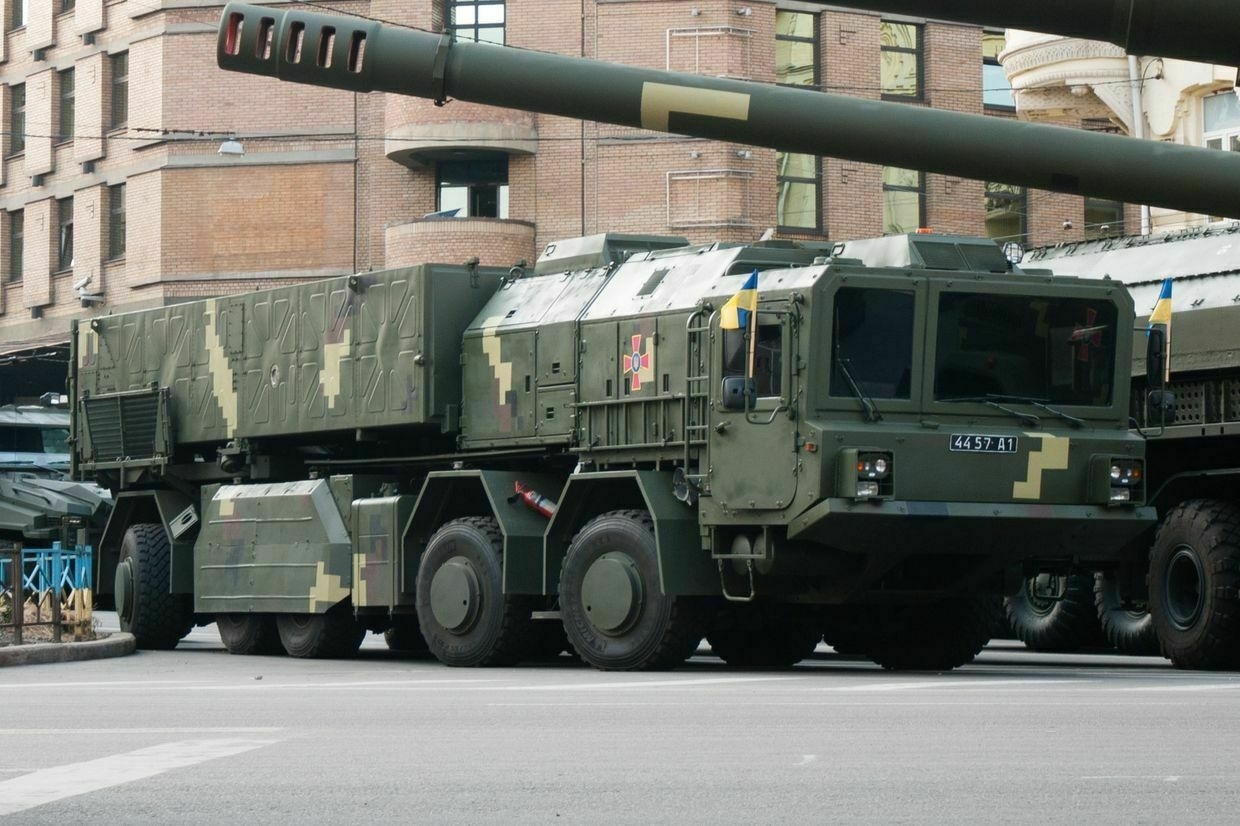
‘Unwanted by their homeland’ — Ukraine confirms Russia returned bodies of its soldiers disguised as UkrainianRussia handed over some bodies of its own soldiers to Ukraine under the guise of Ukrainian casualties during a recent exchange of the deceased, Interior Minister Ihor Klymenko announced on June 19.
“Yes, we have facts. We have established the names of these soldiers and officers who are unwanted by their homeland,” Klymenko wrote on Telegram.
The discovery was made after the handover of remains under an agreement reached during the June 2 talks in Istanbul. In total, Ukraine received 6,057 bodies of its fallen soldiers as part of the phased exchange. Russia, according to Kremlin aide and negotiator Vladimir Medinsky, took back 78.
One of the bodies returned to Ukraine, labeled No. 192/25, was dressed in a Russian military uniform and carried a Russian passport issued to Alexander Viktorovich Bugaev, born in 1974.
Alongside the passport, officials found a military ID indicating Bugaev had served in the 1st Battalion of the 39th Separate Guards Motorized Rifle Brigade.
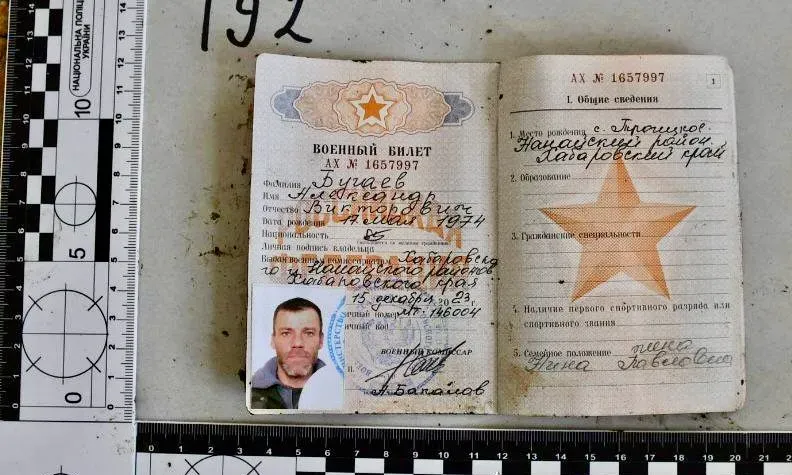
A photo of the passport belonging to a Russian soldier whose body was handed over to Ukraine during a military remains exchange, published on June 19, 2025. (Ihor Klymenko / Telegram) According to Klymenko, Bugaev went missing during heavy fighting near Novomykhailivka in Donetsk Oblast in March 2025. His family had been searching for him for months. Klymenko said Russia had located Bugaev’s body but chose to “dump” it among the Ukrainian dead.
“This is yet another proof of how Russia treats its people with contempt, throwing their bodies onto the bodies of Ukrainian soldiers,” Klymenko said.
“This shows how little human life means to Russia. Or maybe it’s just a way to avoid paying compensation to the families. But they will have to pay anyway: we are returning these bodies."
The official has not mentioned the total number of Russian soldiers' bodies given to Ukraine.
The June 2 negotiations in Istanbul resulted in the most expansive prisoner and body exchange agreement of the full-scale war, although no ceasefire was reached.
Russia accused Kyiv on June 7 of rejecting a proposed body return, publishing footage allegedly showing Ukrainian corpses stored in refrigeration units. Ukraine dismissed the claims, saying the footage was filmed on Russian territory, not at a designated handover site.
Kyiv has consistently called for an “all-for-all” exchange of prisoners of war, but Moscow has so far refused to agree to a comprehensive swap.
Note from the author:
Ukraine War Latest is put together by the Kyiv Independent news desk team, who keep you informed 24 hours a day, seven days a week. If you value our work and want to ensure we have the resources to continue, join the Kyiv Independent community.
-
There's loads of video of Israeli air defenses, and none of Ukraine's — this is why
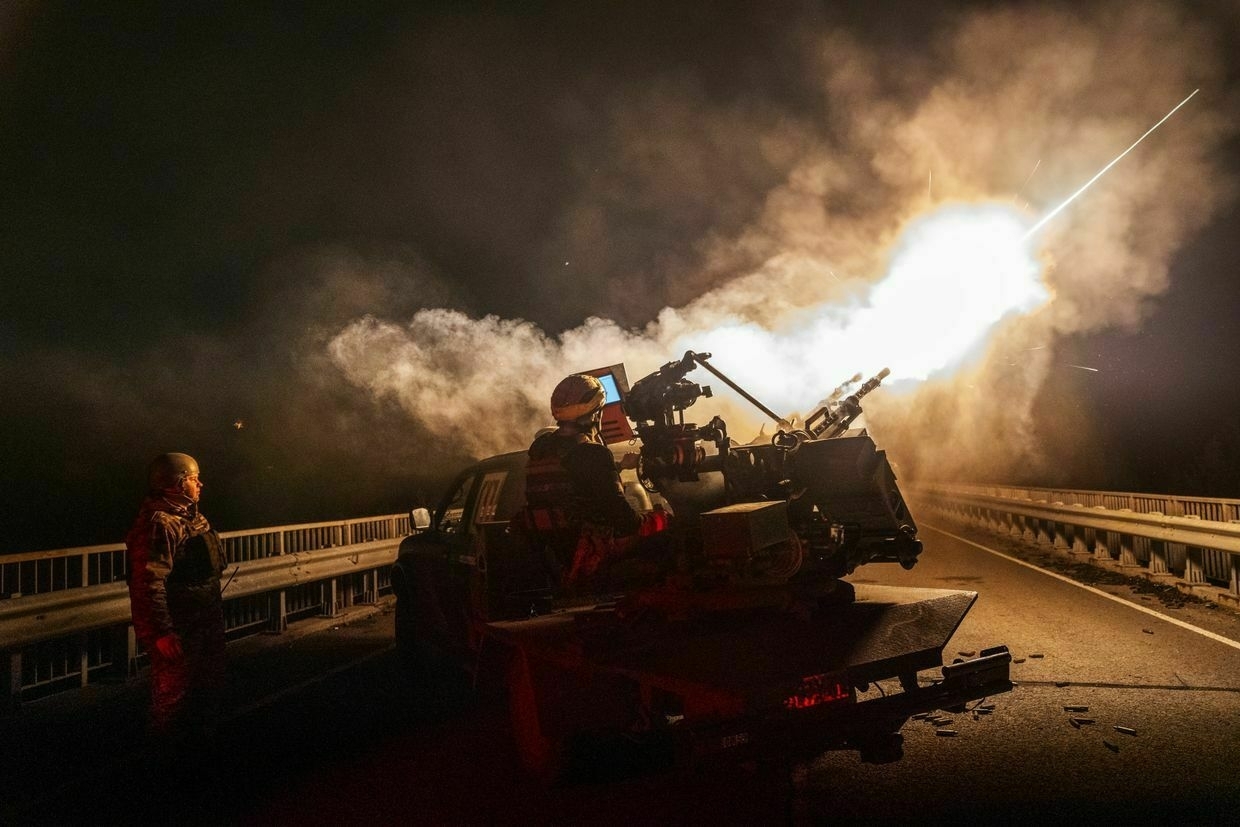
As Israel and Iran continue to trade salvos, dramatic footage of air defenses battling ballistic missiles have flooded the internet.
Several prominent online commentators have compared the videos coming out of Israel with those from Ukraine, questioning why Russian attacks like those on Kyiv are portrayed in relatively sparse detail, while those from cities like Tel Aviv show the full, terrifying spectacle of modern warfare.
Ivan Kyrychevskyi, a military expert with the Defense Express think tank, told the Kyiv Independent that the accounts raising questions appear to be part of a disinformation campaign attempting to downplay Russia’s violence and the suffering of Ukrainian civilians.
Some of the differences in footage is simply down to the types of weapons being used, Kyrychevskyi adds.
"Shahed drones or even Russian missiles targeting Kyiv and other cities don’t always create the kind of dramatic visual effect people expect, like prominent trails in the sky," he said.
But there’s far more to it than just smoke trails.
What do videos from Israel and Ukraine show?The videos coming from Israel have been both horrifying and spectacular — some filmed live by international media teams have shown Israeli air defense systems launching interceptors at incoming Iranian ballistic missiles, all in HD quality.
Live on Fox News as Tel Aviv comes under a massive ballistic missile attack. pic.twitter.com/TCltXbpVgw
— Trey Yingst (@TreyYingst) June 13, 2025Countless other videos filmed by civilians also show Israeli air defenses in action close to their launch sites, particularly in Tel Aviv.
Footage of an Iranian ballistic missile hitting downtown Tel Aviv this evening. pic.twitter.com/7UzzW0M52G
— OSINTtechnical (@Osinttechnical) June 13, 2025Footage of Russian attacks on Ukraine are very different — there are no international media teams filming from hotel balconies, and no footage of air defense systems launching interceptor missiles.
There are plenty of videos of the attacks. After the most recent strike on Kyiv overnight on June 17, which killed 28 people, there was footage of drones slamming into residential buildings.
🚨 A direct strike by a Russian-Iranian Shahed drone on an apartment building full of civilians in Kyiv. pic.twitter.com/8GYrh3X9ri
— Ostap Yarysh (@OstapYarysh) June 17, 2025There are also plenty of videos of the devastating aftermath.
Trump: Russia should be in the G8. I don’t want to impose sanctions.
— Yaroslav Trofimov (@yarotrof) June 17, 2025
Putin: Yay. Let’s lob missiles into Kyiv residential buildings at night and murder lots of sleeping Ukrainians. pic.twitter.com/h77mFO8pl1But there is never anything similar to the types of videos that we have seen coming out of Israel recently, and for good reason.
Filming Ukraine's air defensesIn Ukraine, filming and publishing the work of air defense systems is strictly prohibited, as such information can help the Russian army to locate military positions.
"When people record the work of air defense systems, the enemy can actually see the image of the same missile launch in real time, and determine the location of the launcher very accurately, and can strike back," Air Force spokesperson Yurii Ihnat told the Kyiv Independent.
"Large air defense systems are priority targets for the enemy. So they are always trying to find out where our air defense is, what position it is in. And we have to constantly change our positions so that the enemy does not know where we are."
On March 24, 2022, the Verkhovna Rada, Ukraine’s parliament, adopted legislative changes to introduce criminal liability for sharing the locations or movements of the Armed Forces, including air defense units.
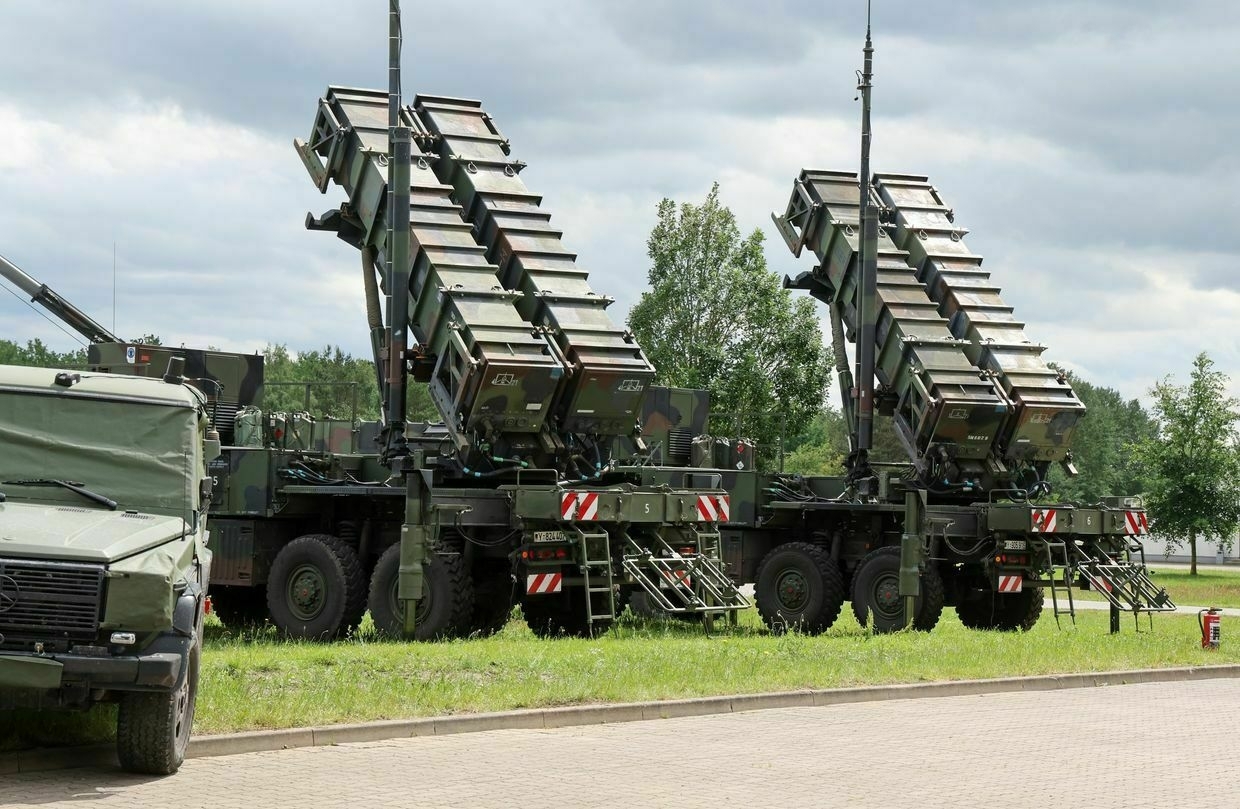
Patriot systems are seen at a military training area of Air Defence Missile Group 21 in Mecklenburg-Western Pomerania, Germany, on May 29, 2024. (Bernd Wüstneck / Picture Alliance via Getty Images) Breaking the law can be punished by up to 12 years in prison. Ukraine's military and security services can film and publish videos but always remove or blur anything that could be used to locate air defenses.
"We (Air Force) often show air defense work. We ask the soldiers themselves, if possible, to film it for us. But we always edit out the harmful parts," Ihnat said.
Israel does not have such a law.
Why is it legal in Israel, and illegal in Ukraine?This essentially boils down to the fact that Israel has one of the most sophisticated networks of air defense on the planet and has less to fear from Iran locating its systems than Ukraine does of Russia.
Ukraine is one of the largest countries in Europe, with a vast territory of 603,628 square kilometers, making it difficult to cover entirely with air defense systems. In contrast, Israel's much smaller size, around 22,000 square kilometers, allows for denser and more efficient deployment of air defenses like the Iron Dome.
"Israel's air defense system has mostly been developed in Israel and is a tightly integrated capability consisting of radars, control centers, and interceptor batteries," Iain Boyd, the director of the Center for National Security Initiatives at the University of Colorado, told the Kyiv Independent.
Ukraine's situation is very different — it currently operates an ad-hoc mix of Soviet-era and Western-supplied air defense systems. These include legacy systems such as the S-300, Buk-M1, and Osa, as well as modern Western systems like Patriot, NASAMS, IRIS-T.
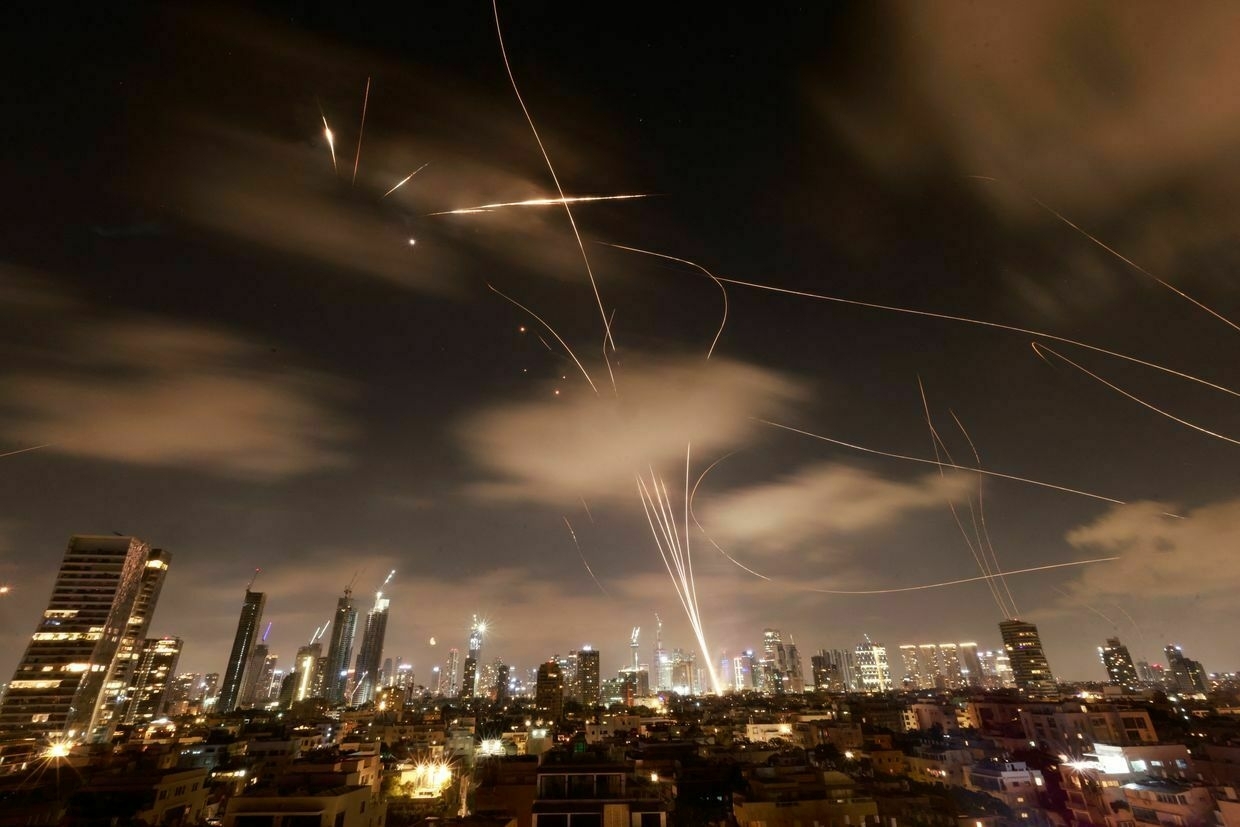
Israeli air defense systems are activated to intercept Iranian missiles over Tel Aviv, Israel, on June 18, 2025. (Menahem Kahana / AFP via Getty Images) The Patriot air defense systems — the only system effective against ballistic missiles — in particular have proved to be a game-changer for Ukraine, whose Air Force previously had to rely on outdated Soviet-era versions to shoot down aerial targets.
Ukraine currently has only eight Patriot systems, two of which are currently not in service, according to the New York Times.
Because the equipment — including the ammunition — are limited in number, each is extremely precious for the defense of Ukrainian cities and as such their locations are shrouded in secrecy.
"There are two main reasons for the categorical ban on filming the work of air defense in Ukraine," retired military officer and defense expert Viktor Kevliuk told the Kyiv Independent.
"To prevent the intentional or unintentional exposure of an air defense position that our enemy is hunting, and to hide the results of strikes from the enemy."
With so much at stake, Ukraine's civilians abide by the rules, with only a handful of cases of people being prosecuted for breaking them.
A video on YouTube highlighted by Ihnat captures the attitude toward those who do film Ukraine's air defenses.
The lyrics to the song? "Who's filming air defense? F**kwits, f**wits."
Russia just accidentally admitted to its staggering troop losses in UkraineA senior Russian official on June 19 inadvertently confirmed the staggering troop losses incurred by Moscow’s forces during its full-scale invasion of Ukraine. In an interview with CNN, Russian Ambassador to the U.K. Andrey Kelin was asked about Moscow’s maximalist intentions in Ukraine and its ability to recruit enoughThe Kyiv IndependentChris York
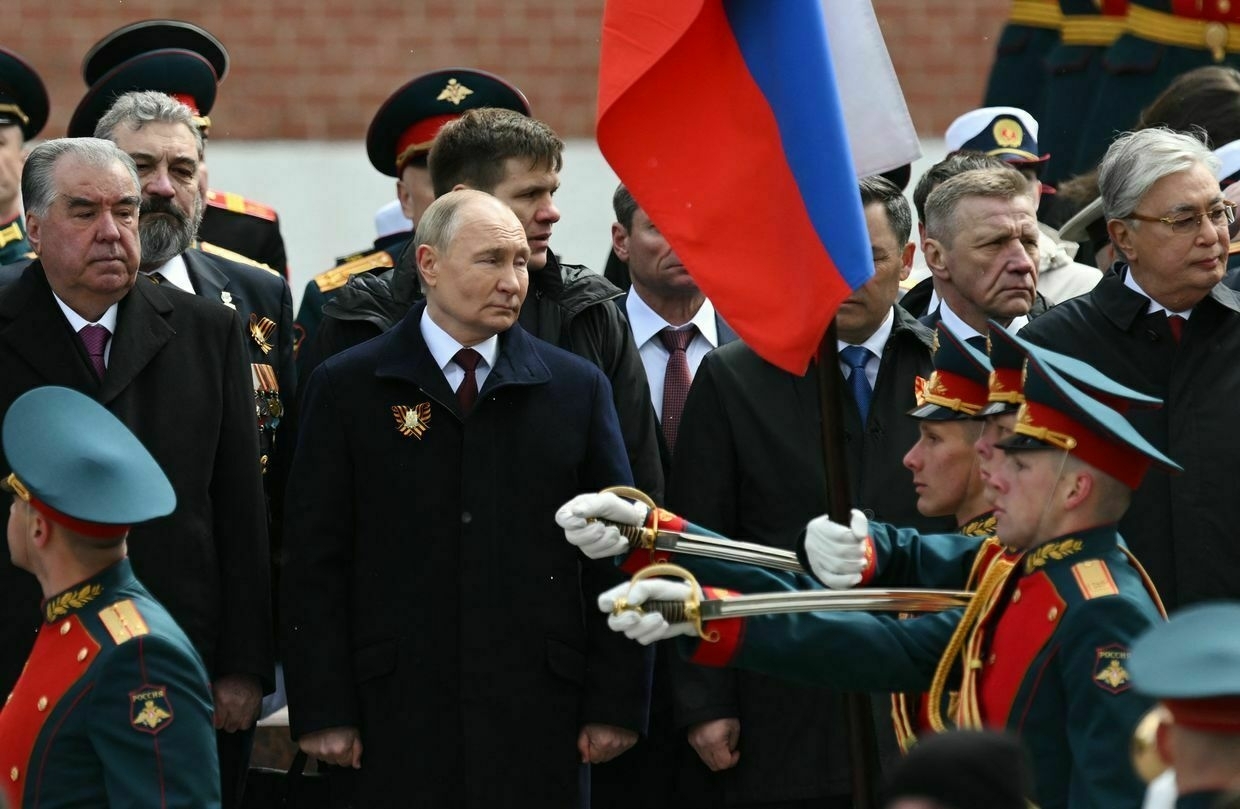
-
Ukraine documents 366 cases of war-related sexual violence, most victims women
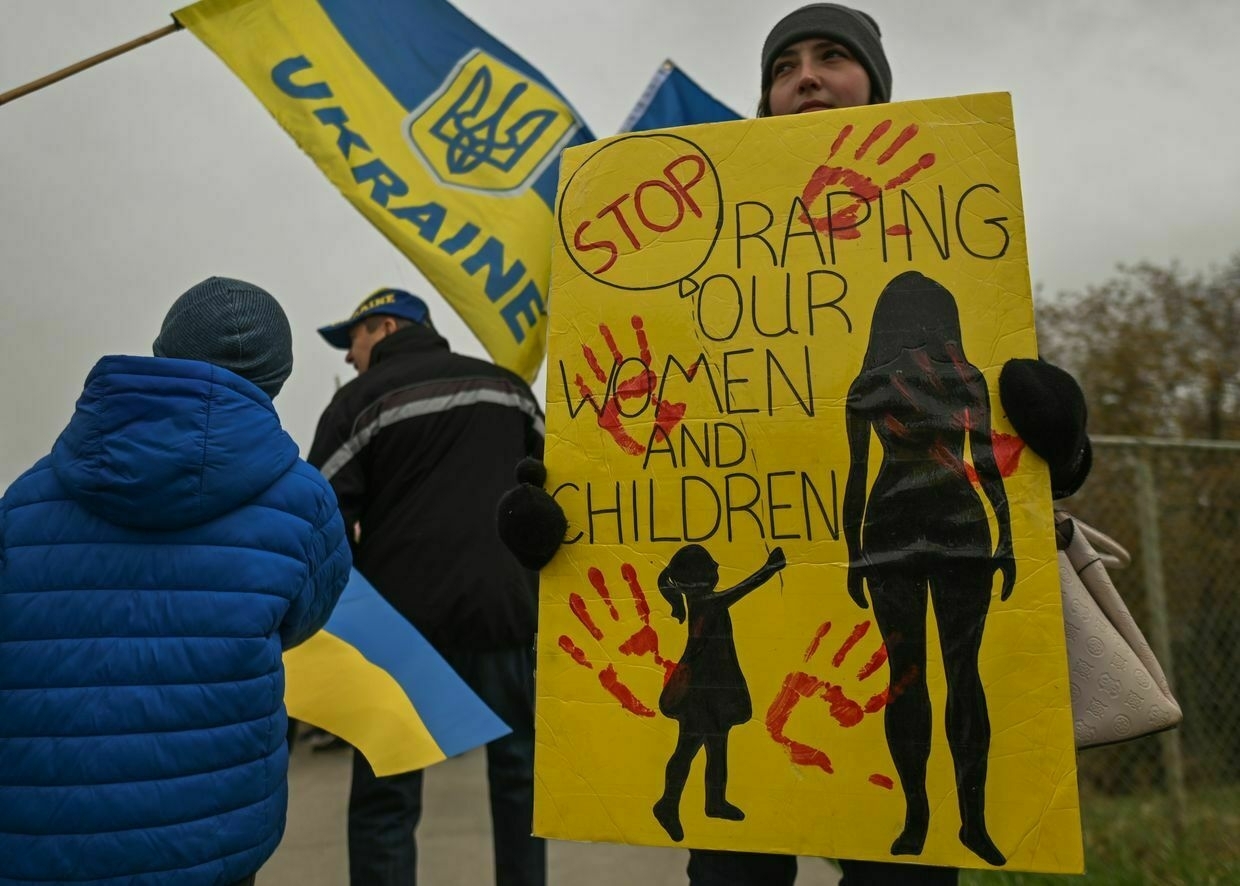
As of June 2025, Ukraine has documented 366 cases of sexual violence committed in connection with Russia’s full-scale war, the Foreign Ministry reported on June 19, citing data from the Prosecutor General’s Office.
The statement was published on the International Day for the Elimination of Sexual Violence in Conflict, marked every year on June 19.
The victims include 231 women, 134 men, and 19 children. The documented crimes span rape, sexual torture, forced nudity, and other violent acts, many of which occurred in occupied territories or during the early stages of Russia’s invasion.
Sexual violence in conflict is prohibited under the 1949 Geneva Conventions and their additional protocols, which mandate the protection of civilians, especially women and children. It is also recognized as a war crime under international law.
Ukraine’s Foreign Ministry said Russia is “grossly violating international humanitarian law” and the legal framework established by multiple U.N. Security Council resolutions.
The ministry said that Moscow has employed sexual violence “as a weapon of war” to terrorize civilians, destroy communities, and weaken resistance.
Ukraine’s Permanent Representative to the United Nations, Sergiy Kyslytsya, raised the issue at the Security Council in April 2024, warning that such violence is being used against both civilians and prisoners of war.
In June 2024, the Kyiv Independent identified two Russian soldiers implicated in the rape of women during Russia’s occupation of parts of Kyiv and Kherson oblasts in March 2022.
One of them, Mykola Senenko, was formally charged by Ukraine’s Prosecutor General’s Office for a rape committed in Kherson Oblast.
Trump’s peace push falters in both Ukraine and the Middle East — for similar reasonsU.S. President Donald Trump addressed a wide range of subjects during his inauguration speech. When speaking about international relations, he was adamant — “Our power will stop all wars and bring a new spirit of unity,” he said, talking about Russia’s war against Ukraine and the fighting in the MiddleThe Kyiv IndependentOleg Sukhov
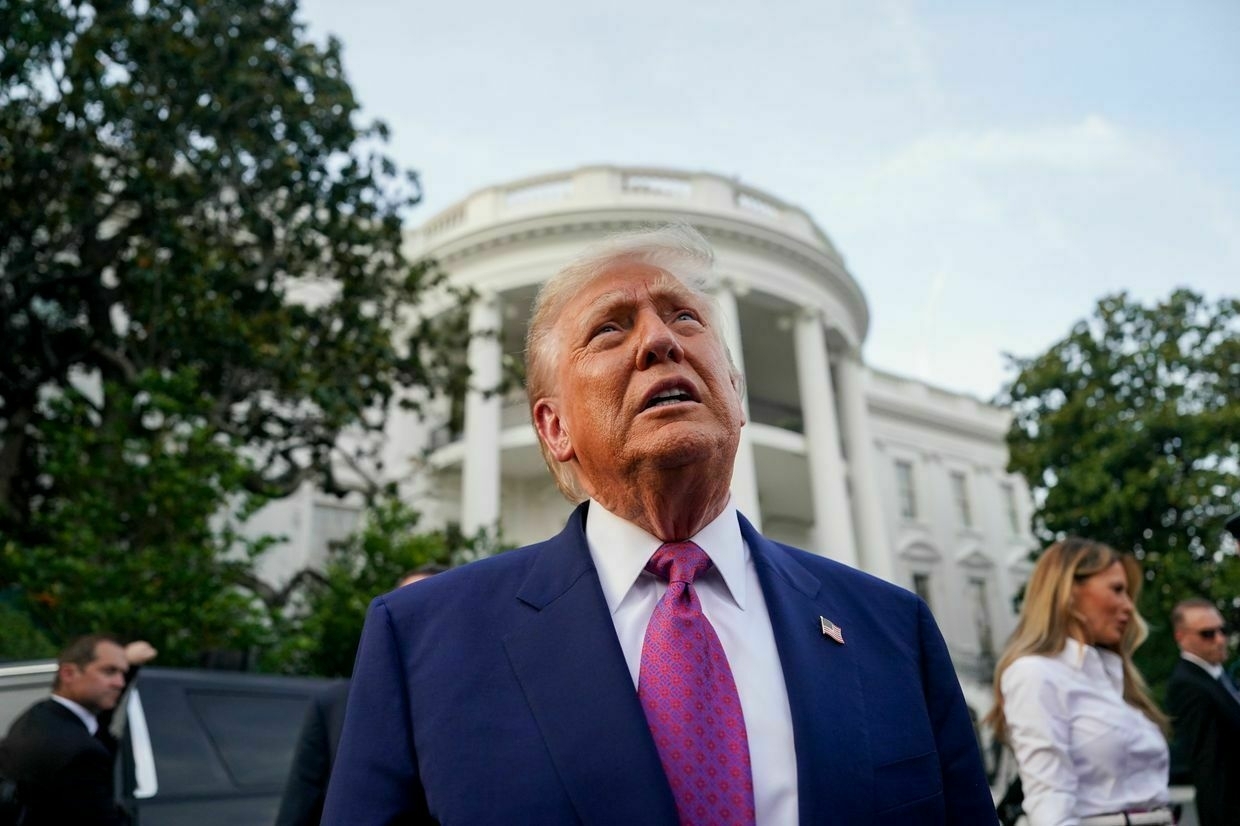
-
Zelensky appoints Brigadier General Shapovalov as new Ground Forces chief
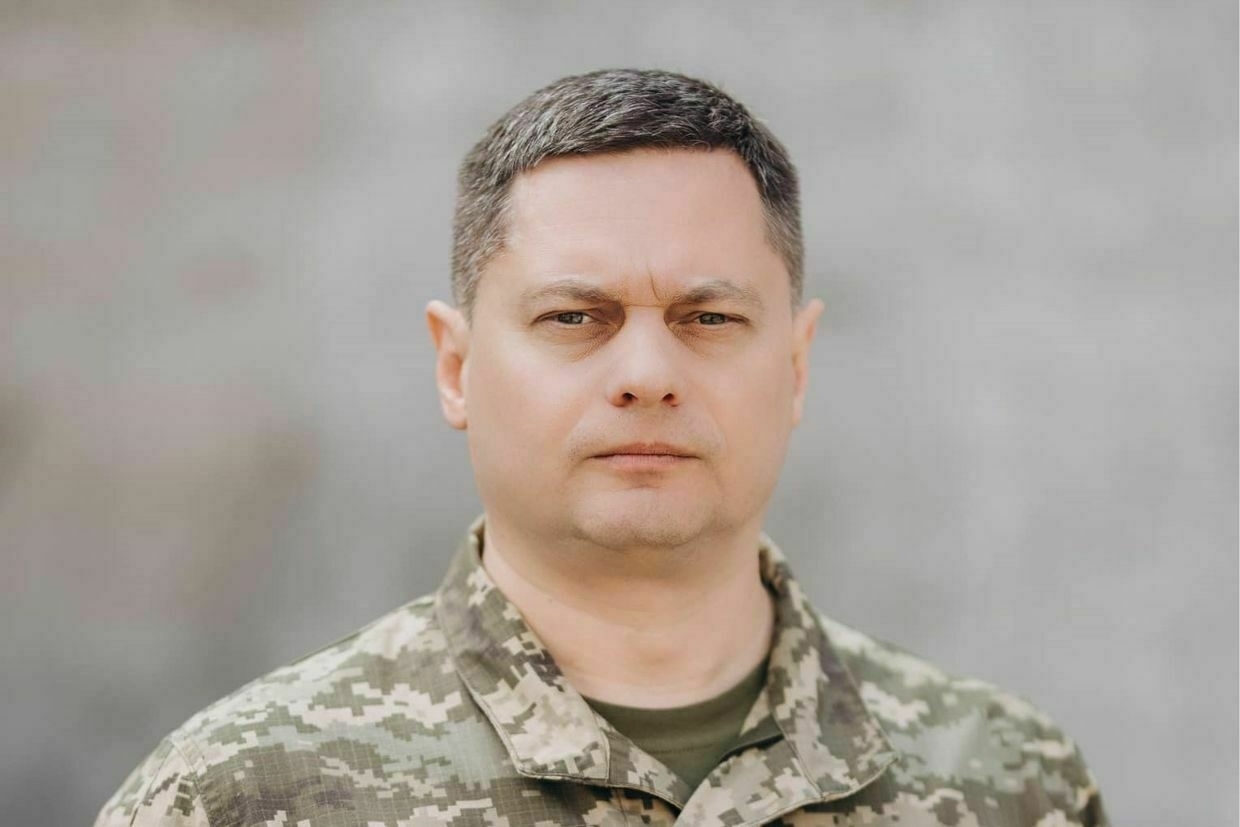
President Volodymyr Zelensky on June 19 appointed Brigadier General Hennadii Shapovalov as the new commander of Ukraine’s Ground Forces, following the resignation of Mykhailo Drapatyi earlier this month.
Drapatyi stepped down on June 1 after a Russian missile strike killed at least 12 Ukrainian soldiers at a training ground in Dnipropetrovsk Oblast. He described the casualties as young recruits who “should have learned, lived, and fought — not died.”
Zelensky accepted Drapatyi’s resignation and appointed him Commander of the Joint Forces on June 3. An investigation into the incident is ongoing, with the Ground Forces promising accountability if misconduct or negligence is confirmed.
Shapovalov, born in 1978 in Kirovohrad Oblast, is a career officer who graduated from the Military Institute of Tank Troops in Kharkiv and later studied at the National Defense University of Ukraine. He also received training at the U.S. Army War College.
Shapovalov previously led Ukraine’s South Operational Command in 2024 and was appointed in February 2025 as Ukraine’s representative to the NATO Security Assistance and Training for Ukraine (NSATU) mission in Germany.
Drapatyi, in his final remarks as Ground Forces chief on June 11, said he had overhauled more than half of the command’s senior leadership, launched a revamp of recruitment centers, and pushed through reforms focused on decentralization, accountability, and modernization.
Zelensky said Drapatyi’s new role would allow him to focus “exclusively on combat issues” as Ukraine faces intensifying Russian attacks across several fronts.
Trump’s peace push falters in both Ukraine and the Middle East — for similar reasonsU.S. President Donald Trump addressed a wide range of subjects during his inauguration speech. When speaking about international relations, he was adamant — “Our power will stop all wars and bring a new spirit of unity,” he said, talking about Russia’s war against Ukraine and the fighting in the MiddleThe Kyiv IndependentOleg Sukhov
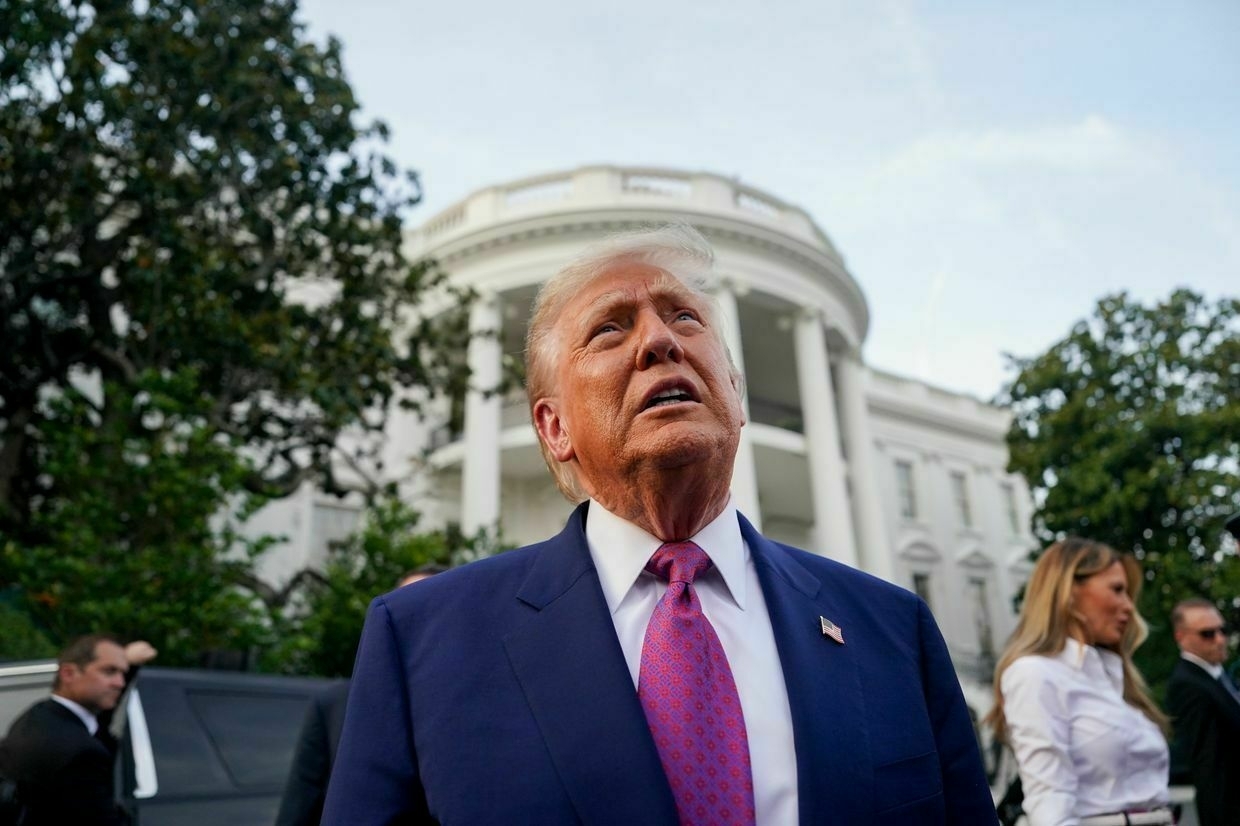
-
Fact Check: Donald Trump Did NOT Threaten to 'Drop Chris Christie' on Iran
Did President Donald Trump threaten, in a TruthSocial post, to "drop Chris Christie" on Iran, in June 2025? No, that's not true: A widely-shared screenshot which appeared to show such a message was, in fact, fake. A search of the president's TruthSocial account yielded no record of his having written those words.
The fake post appeared in a June 18, 2025, post on X (archived here) which garnered more than four million views in one day. The text of the fake post read:
IF IRAN DOESN'T SURRENDER IN THE
NEXT 24 HOURS I'M GOING TO DROP
CHRIS CHRISTIE ON THEM. THANK YOU!This is what it looked like at the time of writing:
(Source: X screenshot)
The Trump post was fake.
A June 19 scan of his TruthSocial account showed no posts matching the one shown in the screenshot. Furthermore, searches on Google and Bing for the phrase "drop Chris Christie", limited to links containing "truthsocial.com/@realDonaldTrump" (using the "site:" search operator) returned no results either. This indicates that Google and Bing didn't recently index such a post.
If Trump had made such a threat, it would undoubtedly have formed the basis of immediate and widespread news coverage. Google News and Yahoo! News searches both yielded no relevant results for the phrases "Trump" and "drop Chris Christie", further underlining the fabricated nature of the post.
-
'Unwanted by their homeland' — Ukraine confirms Russia returned bodies of its soldiers disguised as Ukrainian
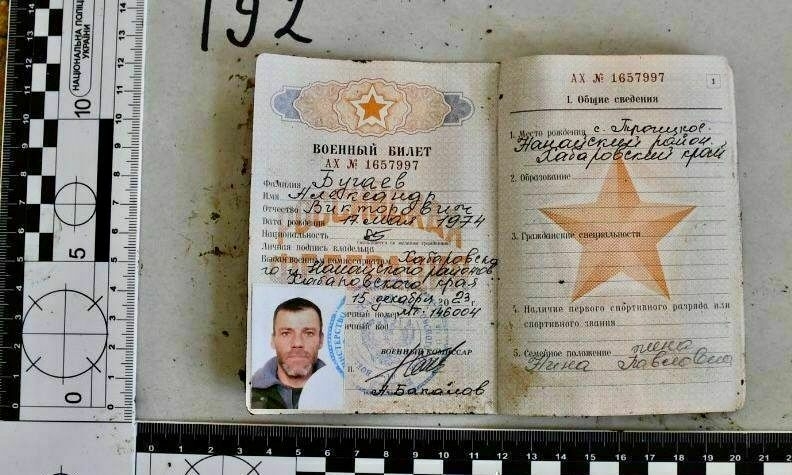
Russia handed over some bodies of its own soldiers to Ukraine under the guise of Ukrainian casualties during a recent exchange of the deceased, Interior Minister Ihor Klymenko announced on June 19.
“Yes, we have facts. We have established the names of these soldiers and officers who are unwanted by their homeland,” Klymenko wrote on Telegram.
The discovery was made after the handover of remains under an agreement reached during the June 2 talks in Istanbul. In total, Ukraine received 6,057 bodies of its fallen soldiers as part of the phased exchange. Russia, according to Kremlin aide and negotiator Vladimir Medinsky, took back 78.
One of the bodies returned to Ukraine, labeled No. 192/25, was dressed in a Russian military uniform and carried a Russian passport issued to Alexander Viktorovich Bugaev, born in 1974.
Alongside the passport, officials found a military ID indicating Bugaev had served in the 1st Battalion of the 39th Separate Guards Motorized Rifle Brigade.
According to Klymenko, Bugaev went missing during heavy fighting near Novomykhailivka in Donetsk Oblast in March 2025. His family had been searching for him for months. Klymenko said Russia had located Bugaev’s body but chose to “dump” it among the Ukrainian dead.
“This is yet another proof of how Russia treats its people with contempt, throwing their bodies onto the bodies of Ukrainian soldiers,” Klymenko said.
“This shows how little human life means to Russia. Or maybe it’s just a way to avoid paying compensation to the families. But they will have to pay anyway: we are returning these bodies."
The official has not mentioned the total number of Russian soldiers' bodies given to Ukraine.
The June 2 negotiations in Istanbul resulted in the most expansive prisoner and body exchange agreement of the full-scale war, although no ceasefire was reached.
Russia accused Kyiv on June 7 of rejecting a proposed body return, publishing footage allegedly showing Ukrainian corpses stored in refrigeration units. Ukraine dismissed the claims, saying the footage was filmed on Russian territory, not at a designated handover site.
Kyiv has consistently called for an “all-for-all” exchange of prisoners of war, but Moscow has so far refused to agree to a comprehensive swap.
Ukraine, Russia carry out another POW exchange under Istanbul deal“These are warriors of the Armed Forces, the National Guard, and the State Border Guard Service. Most of them had been held captive since 2022,” President Volodymyr Zelensky said, without revealing their numbers.The Kyiv IndependentMartin Fornusek
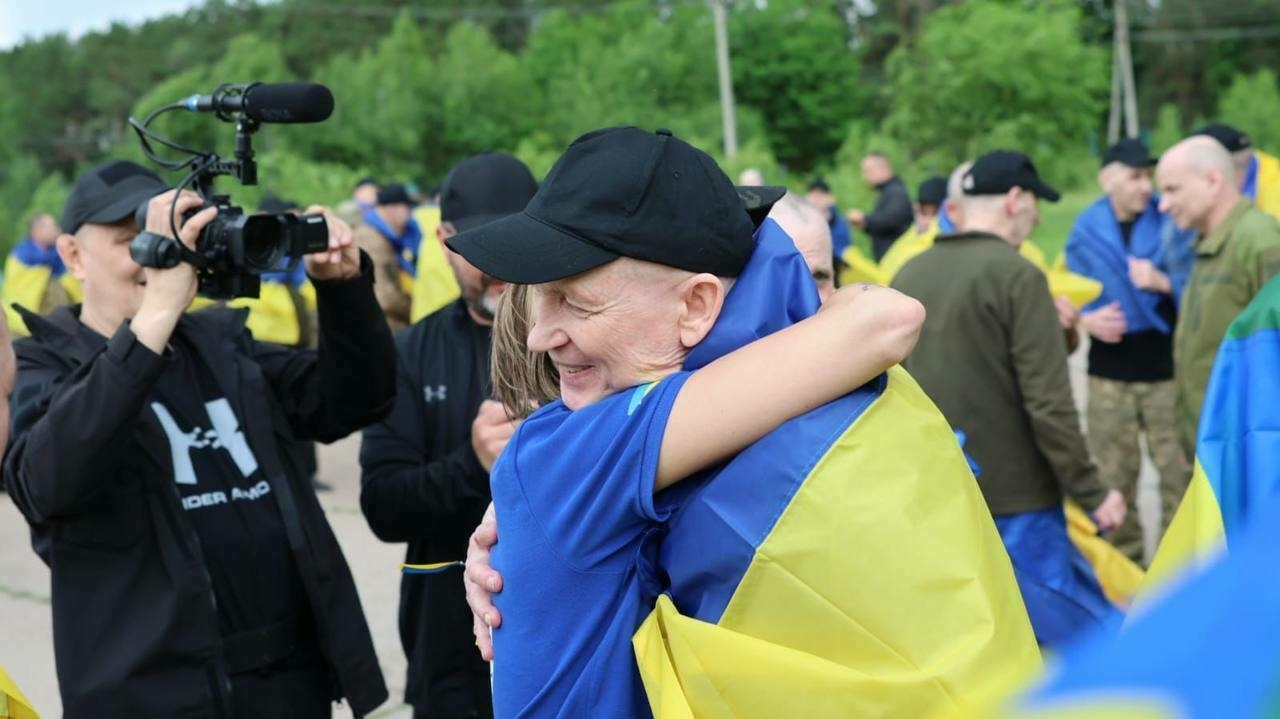
-
Fact Check: OLD Video Shows Flight Attendant Singing With 'Israeli Nationals' -- Clip is From 2023
Did a viral video show passengers singing with a flight attendant waving an Israeli flag, in June 2025? No, that's not true: Posts on social media reused an old recording. The footage had been on the internet since October 2023.
The claim appeared in a post (archived here) on X on June 19, 2025. It read:
Israel carries out a daring rescue, sending special planes to extricate Israeli nationals trapped in their European vacation spots and wing them home to a war zone.The entry included a one-minute video showing a flight crew member holding an Israeli flag and dancing and singing in the aisle between the seat rows on the plane. Passengers appear to recognize the lyrics and sang along, and many were recording the scene on their phones.
Contrary to the implication in the post on X, the recording didn't document anything that happened in 2025. By June 2025, the video had been online for roughly a year and a half.
As of this writing, the earliest available copy of the footage (archived here) found by Lead Stories was uploaded to TikTok on October 24, 2025.Another video of what appeared to be the continuaton of the same scene (archived here) appeared on Facebook even earlier, on October 14, 2023. It was published by Aviad Shotts, whose profile described him as a flight attendant for Arkia Israeli Airlines.
Read more
Other Lead Stories fact checks concerning claims about Israel are here.
Articles about international stories are here.
-
Fact Check: Paul McCartney Did NOT Give Private Jet To World War Two Vet To Reunite With Wartime Lover
Did Paul McCartney give his private jet to a WW2 vet to help the 102-year-old American reunite with his wartime lover? No, that's not true: The text and supporting images in a story making the claim were generated by artificial intelligence tools. There is no documentation that the former Beatle lent his plane to an elderly veteran for a flight to find a European woman he met while serving in World War Two.
The story originated in a post (archived here) published on Facebook and in an online article (archived here) on June 13, 2025. The caption to the Facebook post read:
Paul McCartney gave up his private jet for a 102-year-old WWII vet to reunite with a wartime lover -- but what happened after became Paul's own birthday gift... Mr. Harold, a 102-year-old veteran, wanted to fly to France to meet his long-lost wartime love. Paul gave up his jet. A week later, Harold FaceTimed from Paris, inviting Paul to his 103rd birthday -- with a gift: a WWII map signed by Paul's own grandfather.
FULL STORY BELOW 👇👇👇This is what the post looked like on Facebook at the time of writing:
(Source: Facebook screenshot taken on Thu Jun 19 14:54:34 2025 UTC)
The comment section of the post included a link to an article titled "Paul McCartney's Heartwarming Gesture to Help WWII Veteran Reunite with His Wartime Love." The opening paragraphs read:
In a story that beautifully blends compassion and generosity, legendary musician Paul McCartney recently gave up his private jet to help a 102-year-old World War II veteran, Mr. Harold, reunite with his long-lost wartime love in France. What followed this selfless act, however, would turn into an unexpected and deeply emotional birthday gift for Paul McCartney himself.
Mr. Harold, a 102-year-old veteran, had spent decades apart from his wartime sweetheart, a woman he met during his time in service. As years passed, the two lost contact, and Harold was left with nothing but cherished memories of their brief, yet profound, connection. But, at the age of 102, Harold had one last wish -- to find his beloved and see her once again. His dream was to fly to France, where she lived, and finally reunite with her after all these years.
When Paul McCartney, who is known for his deep humanitarian spirit, heard about Harold's wish, he didn't hesitate to take action. Realizing that Harold's advanced age and the emotional significance of his mission, Paul knew the reunion had to happen. Paul generously offered his private jet, giving up his own comfort and convenience to ensure Harold's dream could come true. A true gesture of kindness, McCartney's actions went beyond celebrity charity -- it was a deeply personal act of compassion, one that showed the power of human connection.
After traveling to France, Harold succeeded in his mission. A week later, the veteran made an emotional FaceTime call from Paris, where he had been joyfully reunited with his wartime love. It was a moment of triumph and nostalgia, filled with smiles and tears. However, what happened next was just as unexpected as the first gesture of generosity.
The article provides no sources for this information, which would be expected in legitimate journalism.
Lead Stories tested the full text with the GPTZero AI Detection tool, which concluded with high confidence that the text was 95% AI-generated.
Lead Stories found obvious clues that the images of McCartney and the veteran used for the Facebook post and in the article were obviously AI-generated. The hat worn by the veteran differed in each image, although the photos were supposedly of the same event.
The number of candles that were lit varies, which is another clue.
The Hive Moderation AI-generated content detection tool left no doubt that all of the images were 99.9% deepfakes.
Fake claims about McCartney and the Beatles are common on Facebook. Lead Stories previously debunked another AI-generated claim that McCartney and Ringo Starr had announced a joint tour.
-
Russia's prison chief sentenced in absentia for torture chambers in Kherson Oblast
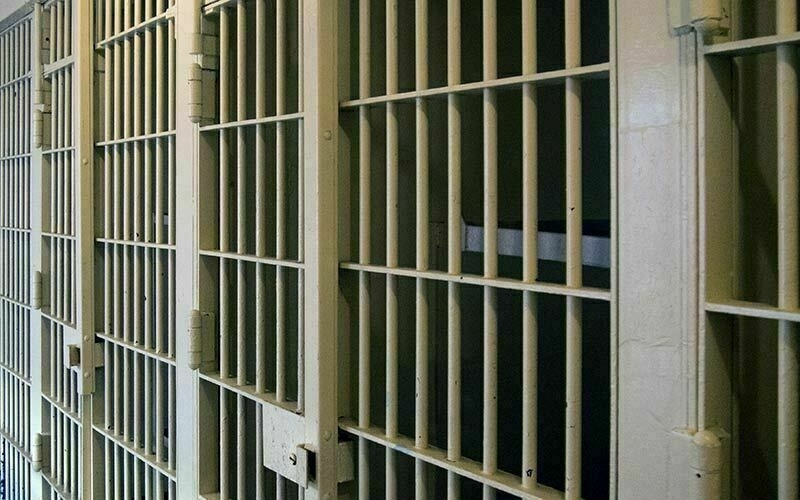
Arkady Gostev, head of Russia’s Federal Penitentiary Service, was sentenced in absentia to 10 years in prison for creating a network of torture chambers in the Russian-occupied part of Kherson Oblast, Ukraine’s Security Service (SBU) announced on June 19.
Gostev was found guilty of orchestrating the transformation of captured Ukrainian prisons into torture sites used to detain and brutalize members of the local resistance. The SBU said victims were subjected to “brutal torture” intended to break their will and force submission to the Kremlin rule.
According to investigators, Gostev personally oversaw the establishment of torture facilities and pushed for their inclusion in Russia’s national prison registry through the Justice Ministry.
The court ruled he committed “actions aimed at violently changing or overthrowing the constitutional order or seizing state power."
“Comprehensive measures are being taken to bring him to justice for crimes against our state,” the SBU said, noting that Gostev remains in Russia.
Kherson Oblast, which stretches from the Dnipro River to the Black Sea, remains partially occupied, with the east-bank territories still under Russian control.
Gostev joins a growing list of senior Russian officials charged in absentia with war crimes, crimes against humanity, and the administration of occupied territories.
Ukraine has also targeted collaborators working with the occupation authorities.
On June 18, Ukraine’s military intelligence (HUR) confirmed the assassination of Mykhailo Hrytsai, a Russian-appointed deputy mayor in Berdiansk, Zaporizhzhia Oblast, for his role in organizing repression and torture of Ukrainian prisoners of war.
‘Beyond cynical’ – Russian doctor carved ‘Glory to Russia’ scar on POW during operation, Ukraine saysAfter more than three years of Russia’s full-scale invasion, each new revelation of cruel treatment of Ukrainians in Russian captivity hardly surprises anyone. But when a photo recently emerged online, showing a “Glory to Russia” scar on the body of a Ukrainian prisoner of war (POW), it sent shockwavesThe Kyiv IndependentDaria Shulzhenko
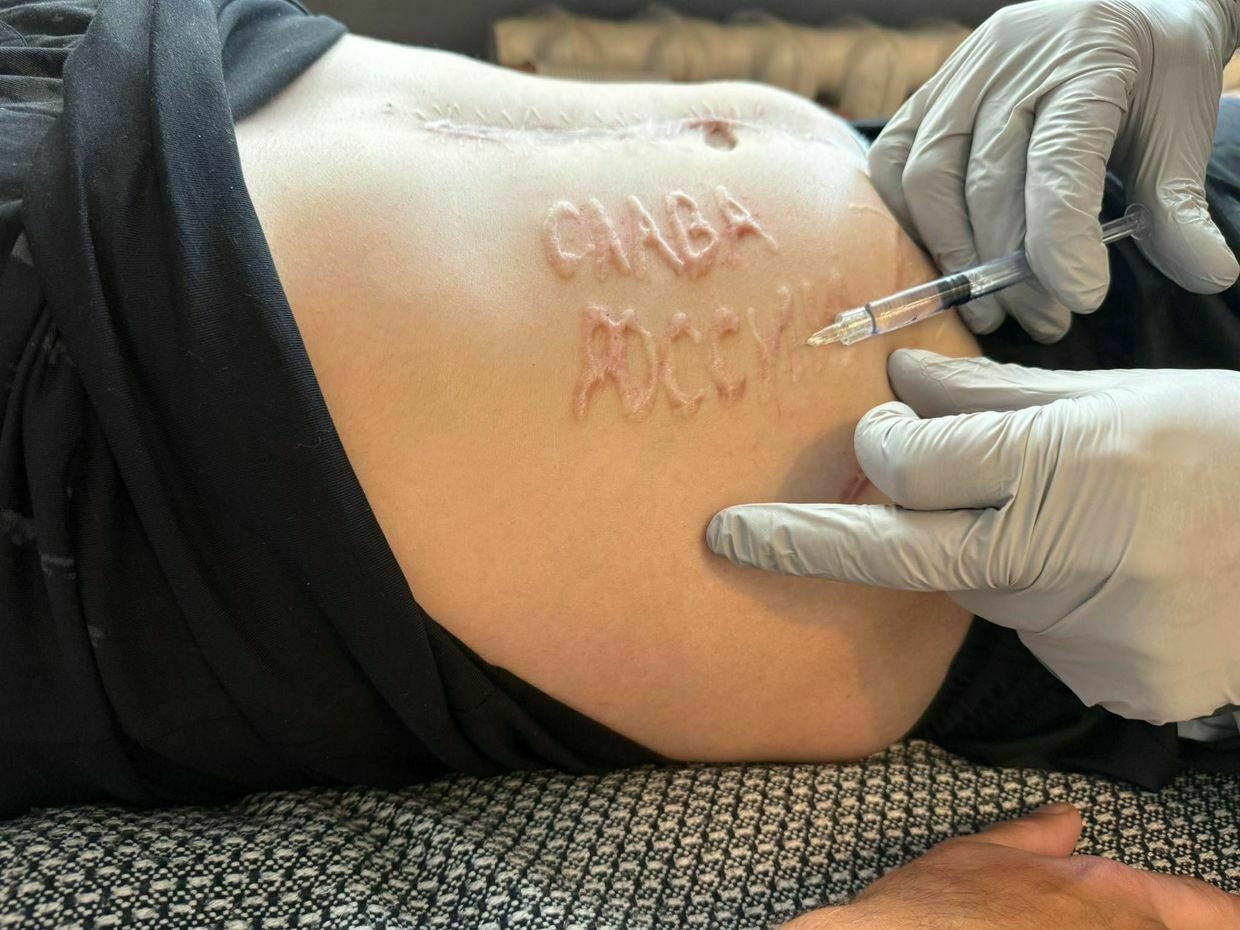
-
Once firm, support for Ukraine among its neighbors wavers amid a populist surge

Fourth year into Russia’s full-scale war against Ukraine, the decisive support Kyiv found among its neighbors to the west is beginning to show cracks.
Once resolute Poland is seeing rising skepticism toward Ukraine, underscored by President-elect Karol Nawrocki’s election victory. Slovakia’s pro-Ukrainian government was ousted by Russian-friendly populists in the 2023 parliament elections, and Czechia may face a similar fate this year.
Pro-Western political forces have barely survived a pro-Russian takeover in Romania and Moldova, but the anti-Ukrainian parties remain powerful in both countries.
In contrast, the only actively pro-Russian government that has been in place since the start of the full-scale war, might soon lose an election of its own. Hungarian Prime Minister Viktor Orban, who has exasperated Ukraine and Brussels with his obstinately pro-Kremlin stances, faces a realistic possibility of defeat next year.
Ukraine still has allies in the neighborhood. But when compared to 2022, the trend is clear — A steady erosion of solidarity among Ukraine’s partners in Central and Eastern Europe amid war fatigue, domestic concerns, and rising populism.
Poland — from champion to cautious allyUnlike in many other countries, in Poland, a division between pro-Ukrainian and Ukraine-skeptic political forces cannot be neatly defined by party lines.
Case in point, President-elect Nawrocki is less sympathetic to Ukraine than his predecessor, Andrzej Duda, even though they both come from the same conservative camp centered around the Law and Justice (PiS) party.
The incoming Polish president is also taking a harder line on Ukraine than the centrist government led by Prime Minister Donald Tusk’s Civic Coalition. While the Tusk government has openly backed Kyiv’s NATO and EU aspirations, Nawrocki spoke out against both.
The historian-turned-president-elect has often employed historical grievances — namely, the World War II-era Volyn massacres — in his criticism, while denouncing Ukraine as “ungrateful” for Polish aid.
However, the vast majority of the Polish political spectrum, including the PiS, the current government, and Nawrocki, agrees that it is in Warsaw’s interest to continue supporting Ukraine against Russian aggression.
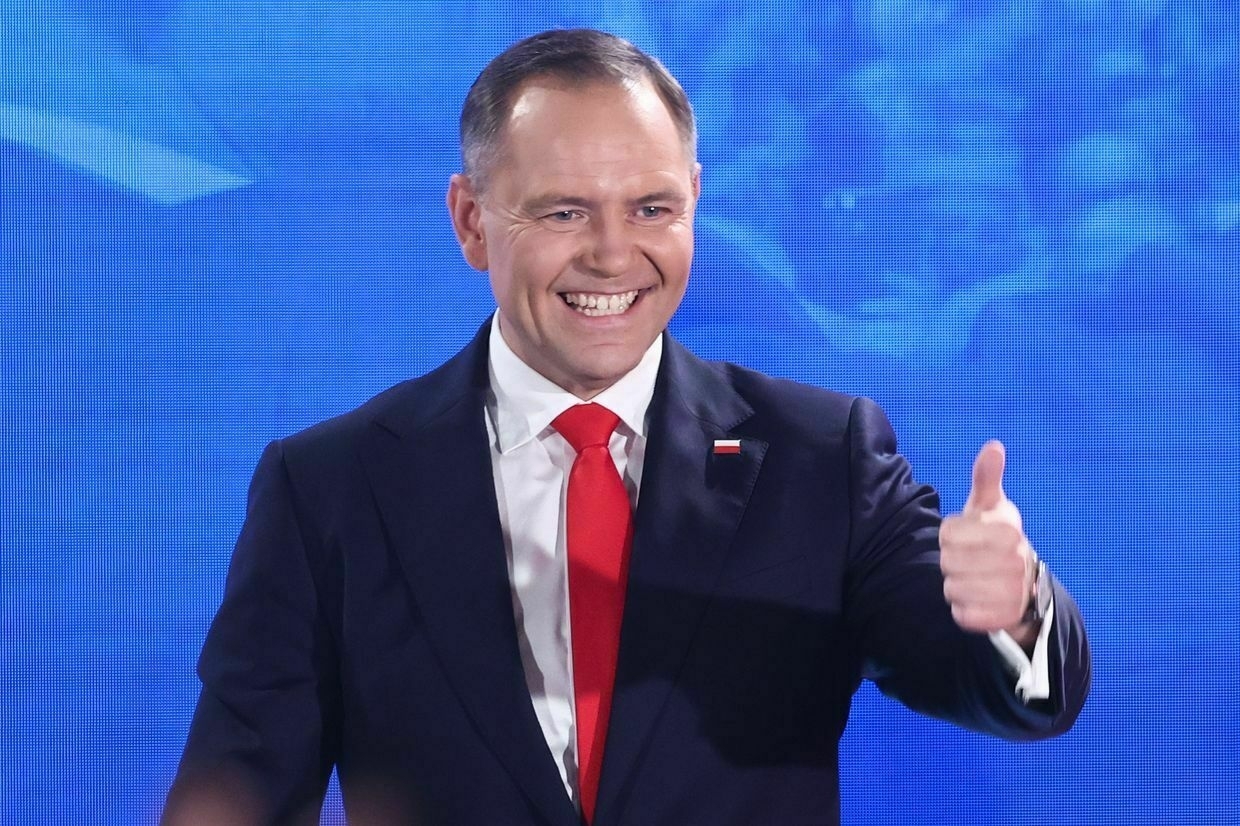
Law and Justice party–backed then-presidential candidate, now President-elect Karol Nawrocki, attends the election night event in Warsaw, Poland, on June 1, 2025. (Jakub Porzycki/NurPhoto via Getty Images) After all, it was the previous PiS government that helped millions of Ukrainian refugees fleeing the country at the start of Russia’s full-scale invasion in 2022, that sent tanks and MiG-29 fighter jets, and that turned eastern Poland into a key military aid hub for Ukraine.
The ties became strained later amid trade disputes, border blockades, and clashes over historical grievances, and did not disappear with the defeat of the PiS and Tusk’s victory in the 2023 elections.
Yet, Poland stands out — its fluctuating relationship with Ukraine doesn’t change the fact that in the country’s war with Russia, it is strongly on Kyiv’s side.
Ukraine is unlikely to lose Poland as its supporter, though Warsaw may not be the leading advocate for Ukrainian European and Euro-Atlantic aspirations it once was.
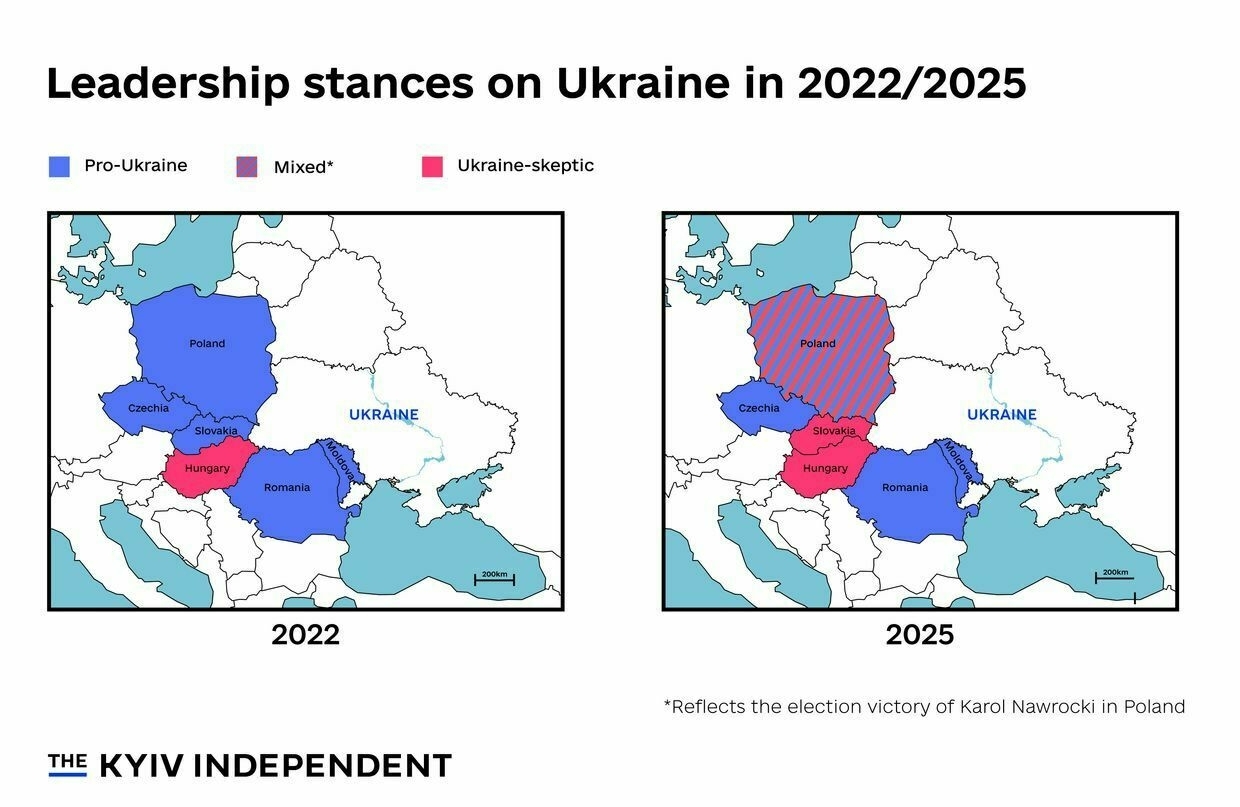
(Nizar al-Rifai/The Kyiv Independent) Can Hungary shift course?As the region is sliding deeper into nationalist populism, Hungary may yet move in the opposite direction.
Peter Magyar, a renegade from Prime Minister Viktor Orban’s Fidesz party, is taking Hungarian politics by storm. His Tisza party now leads polls, suggesting that Magyar has a good chance at dethroning Orban during the upcoming April 2026 parliamentary elections.
Orban has been in power in Hungary since 2010, with his tenure marked by clashes with the EU over human rights and the rule of law, warming relations with Russian and Chinese autocrats, and obstruction of military and political support for Kyiv.
Whether Magyar’s victory next year could bring change remains to be seen. The rising opposition leader visited Kyiv after a Russian attack on the Okhmatdyt hospital last July, but otherwise avoided making any clear commitments to Ukraine. And he has reasons to.
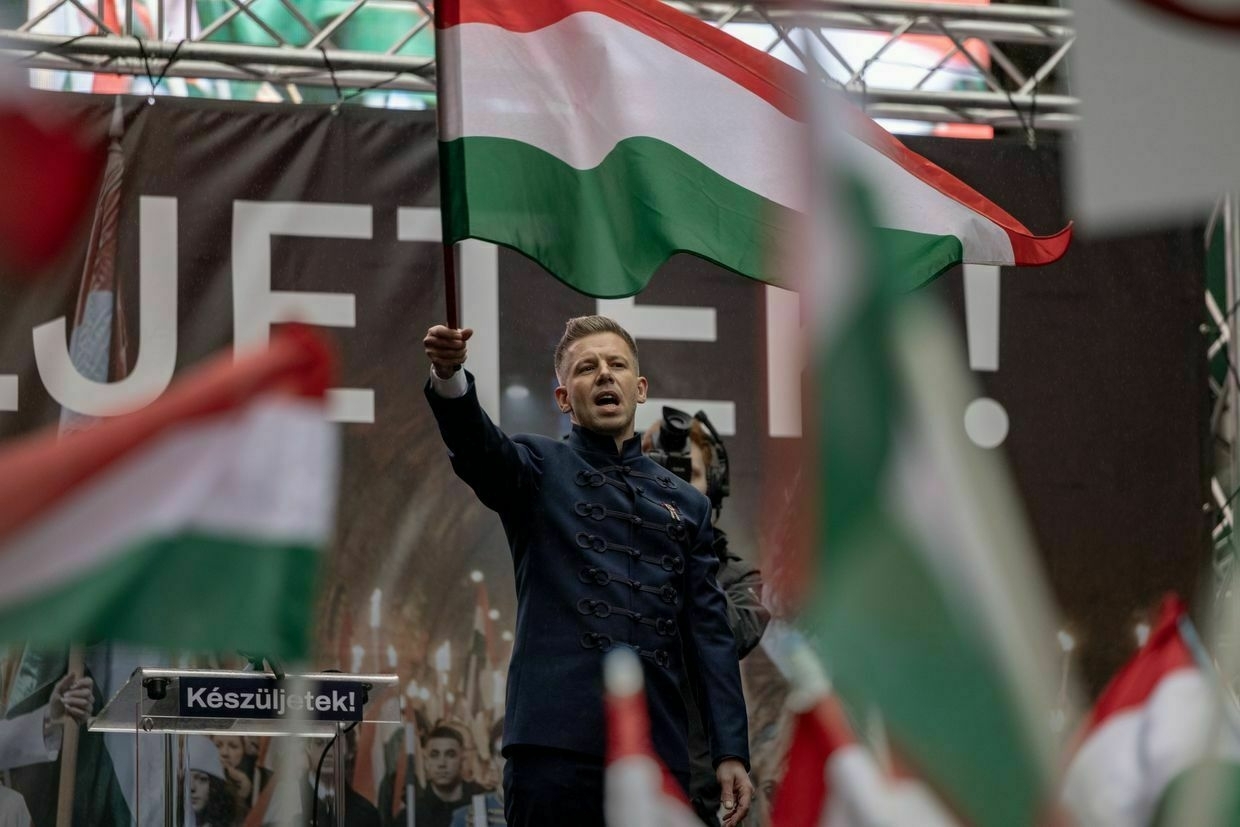
Peter Magyar holds a Hungarian flag during a protest in Budapest, Hungary, on March 15, 2025. (Janos Kummer/Getty Images) “In order to win the elections, (Tisza) needs to win over voters from Fidesz, and, after 15 years of indoctrination, this will not be possible if Tisza takes a broadly pro-Ukrainian stance,” Csilla Fedinec, senior research fellow at HUN-REN Center for Social Sciences in Budapest, told the Kyiv Independent.
“In Hungary, the elections are free but definitely not fair.”
Dorka Takacsy, a research fellow at the Center for Euro-Atlantic Integration and Democracy (CEID) and visiting fellow at the German Marshall Fund, nevertheless says that Magyar might decide to support Ukraine to position himself as Orban's "polar opposite."
Magyar's victory is far from certain, however.
"There are insane disparities with regards not only in access to the media, but also finance-wise" between the "state party" Fidesz and the Tisza newcomers, Takacsy said, adding that "in Hungary, the elections are free but definitely not fair."
Romania remains on Ukraine's side, but pro-Russian challenge growsLooking from Ukraine's perspective, Romania has avoided becoming "another Hungary" by the skin of its teeth, as numerous polls projected that anti-Ukraine and hard-right George Simion could win the presidential office this May.
Simion had strong chances, taking over the "sovereignist" banner from pro-Russian ultranationalist Calin Georgescu, who came in first in the annulled election last November but was barred from running again.
A far-right victory would have been a major upheaval for the key NATO member that was pivotal in helping Ukraine ship out its grain amid Black Sea blockades and provided a full Patriot air defense system.
Bucharest "will have a stable pro-EU, pro-NATO, and pro-Ukrainian force until the next parliamentary elections."
Bucharest Mayor Nicusor Dan, a pro-EU centrist, defied expectations when he defeated Simion by a solid margin. This ensured "that Romania will stay on the pro-Western track," Sergiu Miscoiu, a political science professor at the Babes-Bolyai University in Cluj-Napoca, told the Kyiv Independent.
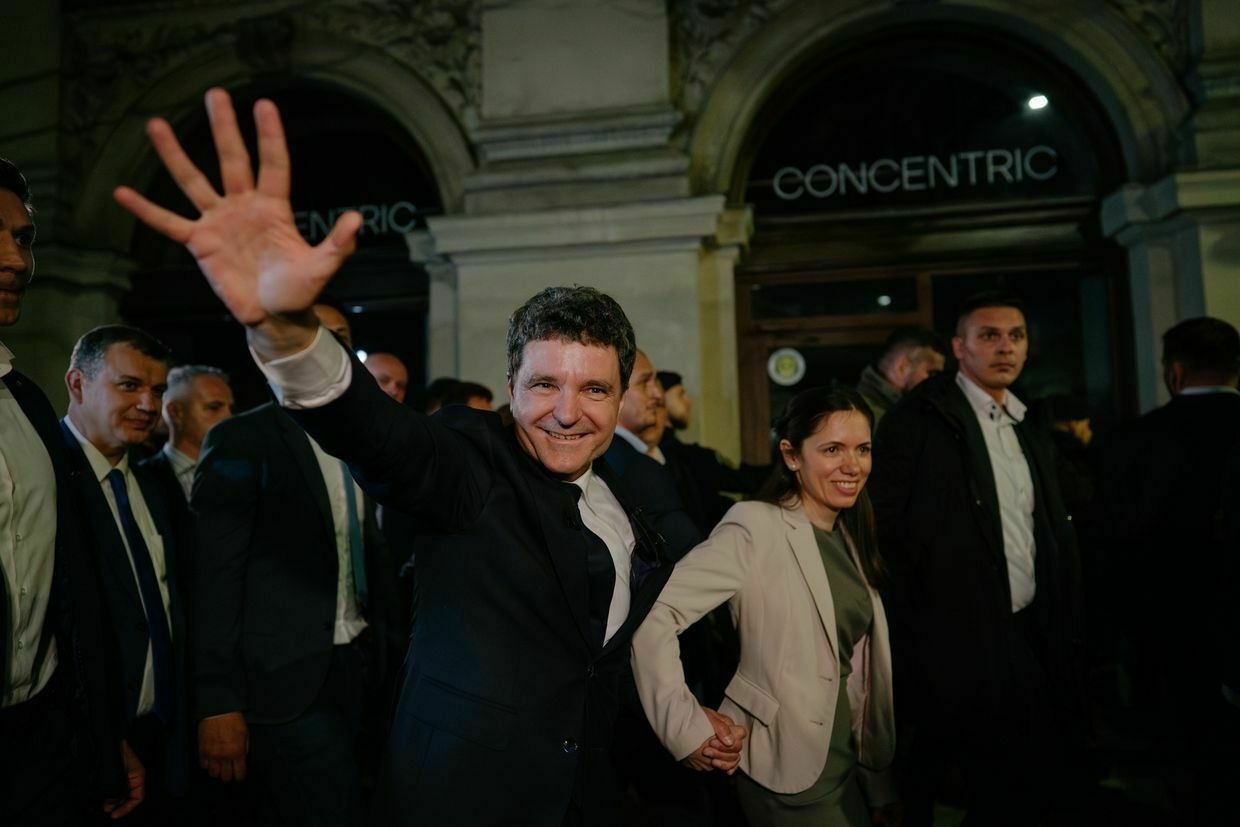
Then-presidential candidate, now Romanian President Nicusor Dan and his partner Mirabela Gradinaru greet supporters after the first exit poll results on the day of the presidential election in Bucharest, Romania, on May 19, 2025. (Andrei Pungovschi/Getty Images) Romania's political woes are far from over, as Dan must now help broker a new government among pro-EU parties. Prime Minister Marcel Ciolacu's pro-Ukrainian cabinet resigned after its candidate failed to advance past the first round of the presidential election.
If these negotiations are successful, "which is highly probable," Bucharest "will have a stable pro-EU, pro-NATO, and pro-Ukrainian force until the next parliamentary elections," Miscoiu added.
The specter of the massive right-wing, anti-establishment surge among Romanians persists, however.
Simion's party, the Alliance for the Union of Romanians (AUR), went from 9% support in 2020 to 18% during last year's parliamentary vote, becoming the leading opposition force and the second-biggest party in the parliament. Its support only continues to surge, now hitting 38% in some surveys.
Such broad backing for a party whose leader has been banned entry to Ukraine due to what the Security Service of Ukraine (SBU) called "systematic anti-Ukrainian activities" and who openly opposed military aid for Ukraine should be a worrying signal for Kyiv.
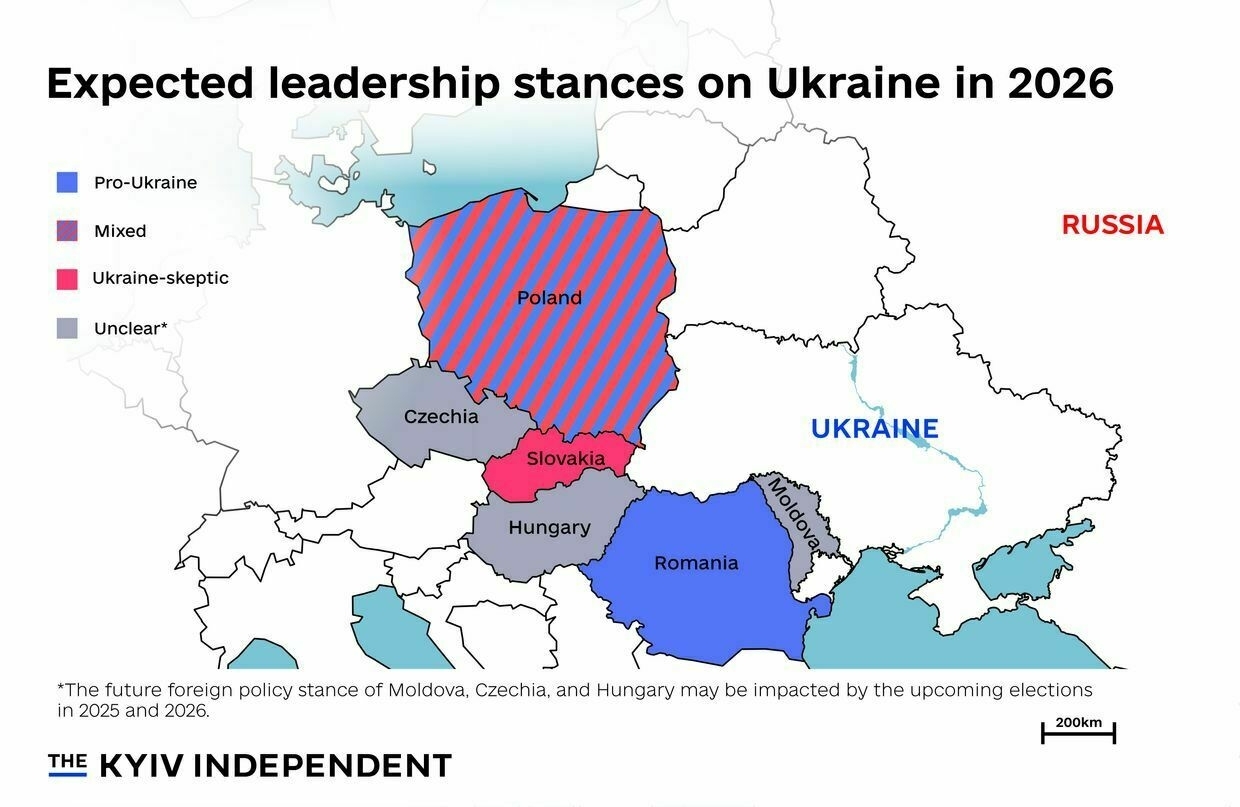
(Nizar al-Rifai/The Kyiv Independent) Moldova's pro-EU path faces second challengeJust like in Romania, Moldova's pro-EU and pro-Ukrainian leadership has evaded defeat by Moscow-friendly opposition — but their fight is not over.
Moldova's small population, modest military, and limited economic capacity restrict its ability to play a major military role in the pro-Kyiv coalition. In spite of this, Chisinau has stood by Ukraine since the onset of Russia's full-scale invasion and has become its partner on the path toward EU accession.
Pro-European President Maia Sandu won reelection in November 2024 by defeating Alexandr Stoianoglo, a former prosecutor endorsed by pro-Russian ex-President Igor Dodon.
However, the simultaneous non-binding referendum on Moldova's EU aspirations showed only a razor-thin margin in support of the accession. Sandu cried foul, accusing Russia of an "unprecedented" interference in its favor.
Now, pro-Russian forces within the country are gearing up for another attempt to grab power, this time during the September parliamentary elections — a vote with potentially major ramifications in the semi-parliamentary republic.
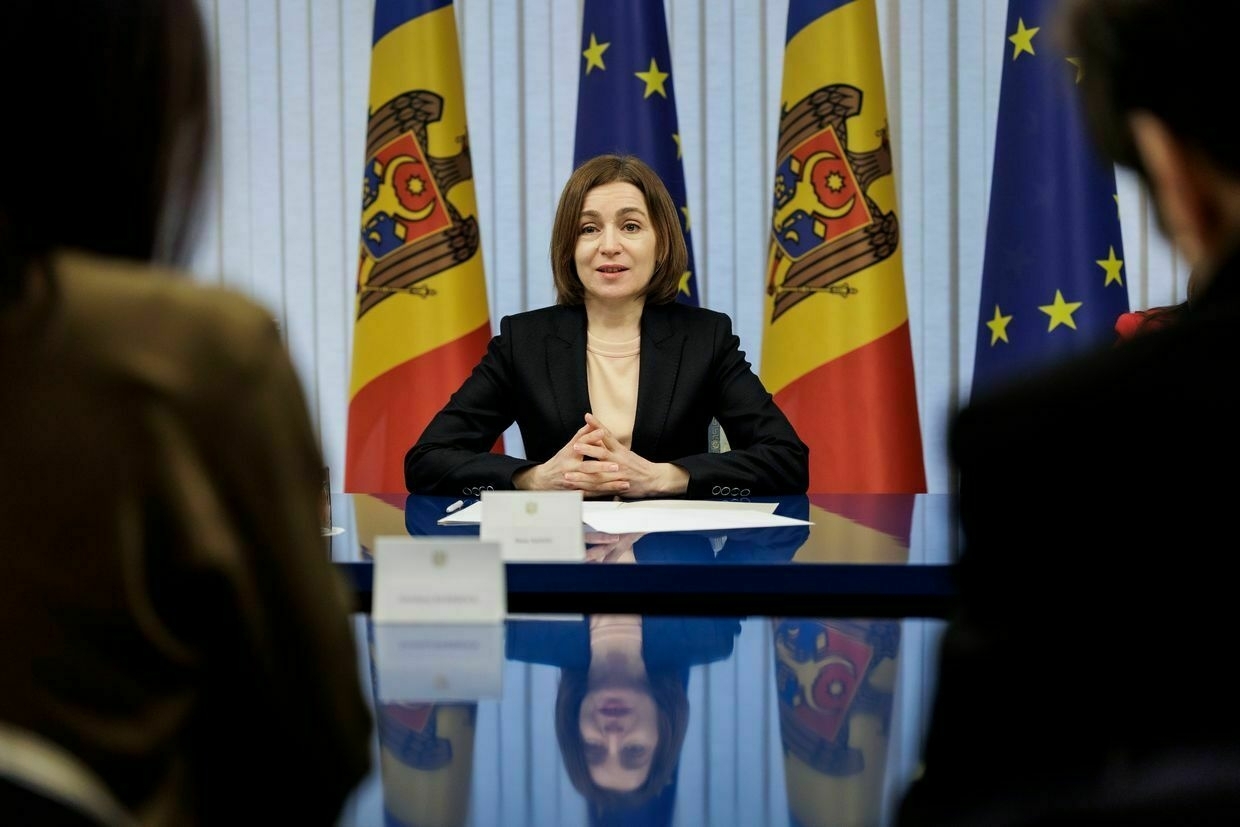
Moldovan President Maia Sandu is pictured in Chisinau, Moldova, on April 2, 2025. (Kira Hofmann/Photothek for the German Federal Foreign Office via Getty Images) Sandu's party, the Party of Action and Solidarity (PAS), currently holds the majority, but faces a challenge from Dodon's Bloc of Communists and Socialists (BCS) and the Alternative, a political bloc co-founded by Stoianoglo.
"If Sandu's party loses majority in the parliament, Maia Sandu will be forced to cohabit with a parliament that is more powerful in terms" of approving the prime minister and the government, Miscoiu said.
In such a situation, Chisinau would not turn openly pro-Russian, the expert says. However, it would shift toward a "neutral" status that would allow the activation of various pro-Russian elements, some of which are currently banned in Moldova, and compromise the country's EU hopes, he added.
Slovakia's U-turn under Fico, and what comes nextFew European countries have seen such a radical foreign policy shift in recent years as Slovakia after the electoral victory of the populist, left-nationalist Robert Fico in the fall of 2023.
The nation that was one of the first to provide Ukraine with fighter jets — not to mention an S-300 air defense system, artillery, and more — now ranks alongside Orban's Hungary as the most Moscow-friendly government in the EU and NATO.
Fico's role as a disruptor has largely been about theatrics, from his meeting with Putin in Moscow last year to his appearance on Russian propagandist Olga Skabeyeva's channel and his presence at the Moscow Victory Day parades on May 9 — an event even Orban avoided.
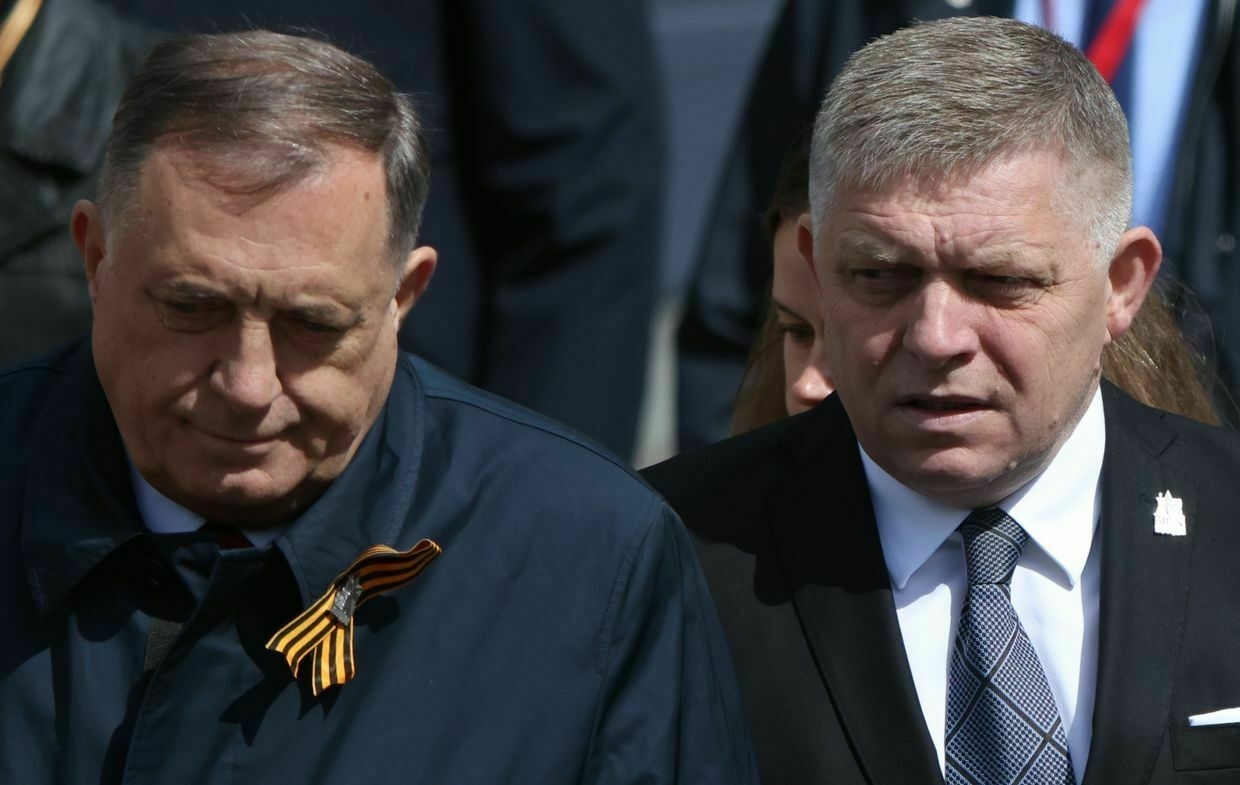
Slovak Prime Minister Robert Fico (R) and President of Republika Srpska Milorad Dodik (L) arrive for a wreath-laying ceremony at the Tomb of the Unknown Soldier in Moscow, Russia, on May 9, 2025. (Contributor/Getty Images) The Slovak leader has also clashed with Ukraine over the transit of Russian gas, halted military aid from (largely emptied out) Slovak military arsenals, and threatened to block the upcoming package of EU sanctions.
However, mass protests against Bratislava's pro-Moscow orientation and the dropping public support for coalition parties show that Fico's hold on power is far from secure.
Fico's foreign policy turn has also sparked criticism within the coalition. Slovak President Peter Pellegrini, Fico's ally and founder of the co-ruling Hlas party, has rebuked the government for moving away from its Western partners and announced his visit to Kyiv.
Should Fico's grip on power continue to weaken, Slovakia's geopolitical course could change yet again.
Czechia slipping away from UkraineWhile not directly sharing borders with Ukraine, Czechia — lying less than 300 kilometers from the warring country — has been a significant player in both military and humanitarian assistance for Kyiv.
Since 2022, Czechia has provided shelter to some 400,000 Ukrainian refugees. Prague was also behind the international ammunition initiative, which provided Ukraine with 1.5 million high-caliber rounds in 2024 and an additional 400,000 as of the spring of 2025.
But the parties that oversaw these policies seem to have a slim chance of retaining the parliamentary majority in the upcoming October elections.
The populist ANO movement of billionaire and ex-Prime Minister Andrej Babis is leading Spolu — the center-right coalition that is the main force in the government — by some 10 percentage points, meaning Babis is very likely to return to power by the end of this year.
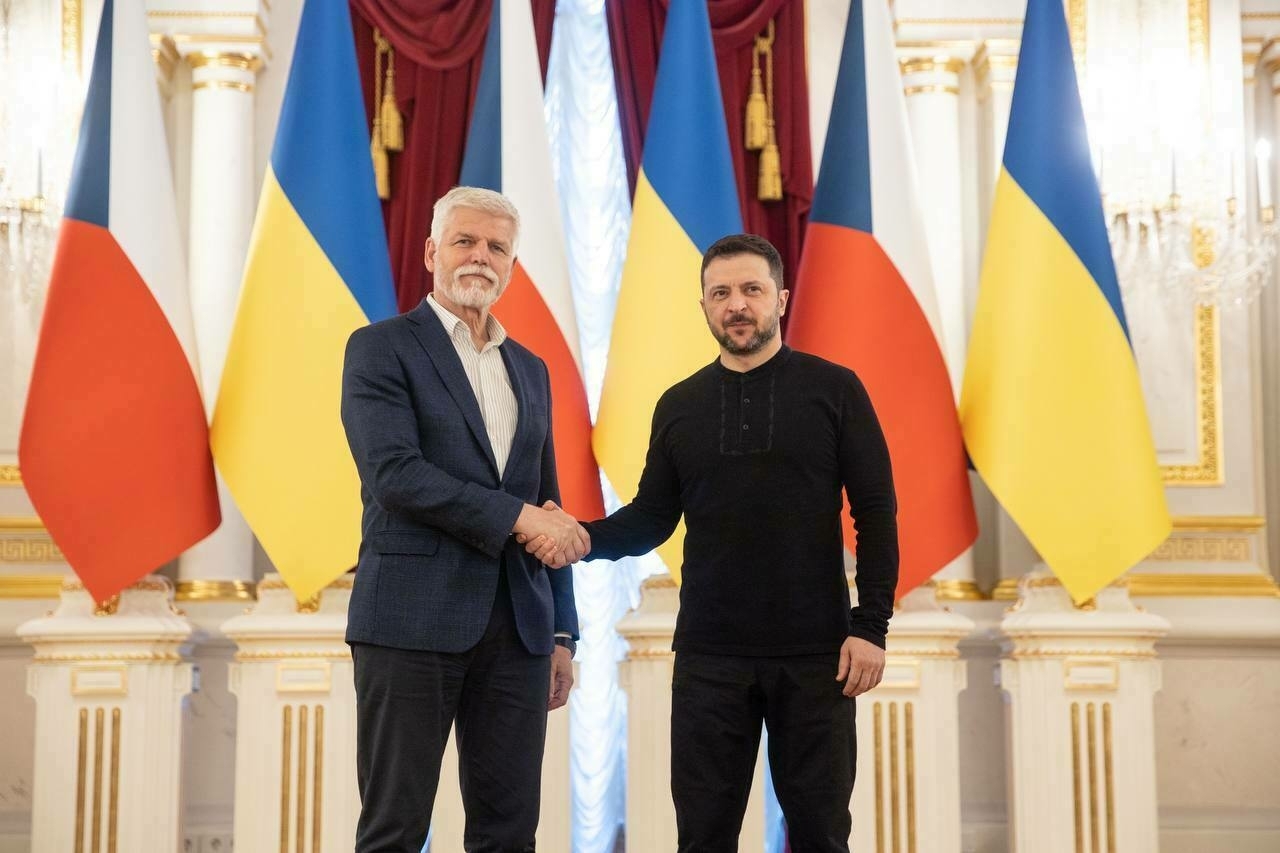
President Volodymyr Zelensky (R) meets with Czech President Petr Pavel (L) in Kyiv, Ukraine, on March 21, 2025. (The President’s Office) In the runup to the vote, Babis has increasingly lambasted the government's support for Ukrainian refugees, arguing that it comes at the expense of Czech families. Babis's right-hand man, Karel Havlicek, even declared earlier this year that ANO would kill the ammunition initiative for Ukraine, though the party later muted this statement.
While ANO has largely tried to avoid the topic of Ukraine as a major topic, this now seems to change as Babis is fishing "in the anti-systemic waters," likely to counter the rise of the more radical and anti-Ukrainian SPD party, Pavel Havlicek (no relation), a research fellow at the Association for International Affairs in Prague, told the Kyiv Independent.
Paradoxically, the far-right SPD and the communist-led Stacilo! (Enough!) bloc appear to be ANO's most likely coalition partners. These radical groups "come with a very clear agenda undermining the course of Czech foreign policy," Havlicek said.
"At the same time, ANO has a weaker and less articulated position on most matters, which might further empower the smaller political actor(s) to take matters into their own hands, including taking over the Czech Foreign Ministry," he adds.
No matter the result of the parliamentary elections, Ukraine will continue to have a vocal advocate in President Petr Pavel – though presidential powers in Czechia are limited.
By mid-2025, support for Ukraine is showing signs of strain in Central and Eastern Europe. Yet, pro-Ukrainian forces have managed to score some surprising wins, showing that victory against the rising wave of pro-Russian populism is possible.
-
North Korea considers sending 25,000 workers to Russia to help produce Shahed drones, media reports
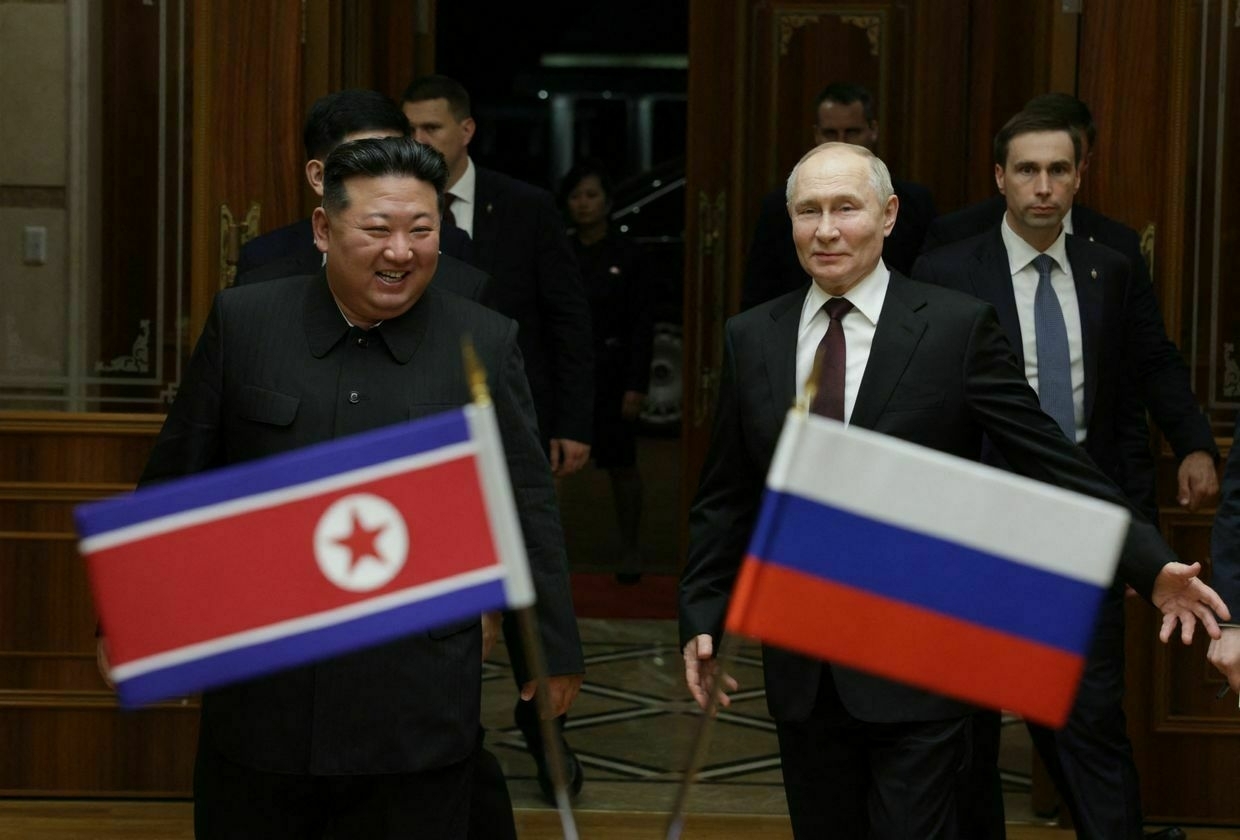
North Korea is considering sending up to 25,000 workers to Russia to assist in the mass production of Shahed-type attack drones, Japan’s public broadcaster NHK reported on June 19, citing unnamed diplomatic sources in the West and Russia.
The workers would be sent to the Alabuga Special Economic Zone in Russia’s Republic of Tatarstan, where Moscow operates a facility for assembling Iranian-designed Shahed drones. In return, Pyongyang is reportedly seeking drone operation training.
Shahed drones, known for their low cost and heavy explosive payloads, have been used extensively by Russia since late 2022 to attack Ukrainian cities. The Alabuga site has been repeatedly struck by Ukrainian forces in an attempt to disrupt production.
The media report follows a series of rapid developments in military cooperation between Moscow and Pyongyang. Russian Security Council Secretary Sergei Shoigu visited North Korea on June 17, reportedly on a “special assignment” from Russian President Vladimir Putin.
After meeting Kim, Shoigu said that Pyongyang had agreed to send 1,000 combat engineers and 5,000 military builders to Russia’s Kursk Oblast to assist in reconstruction.
Ukraine controlled a part of Kursk Oblast following a cross-border offensive in August 2024. Russia regained much of the lost territory during a March 2025 counteroffensive that included backing from North Korean forces. According to estimates, North Korea has suffered over 6,000 casualties during the offensive operations.Ukraine’s military intelligence chief, Kyrylo Budanov, said on June 9 that Pyongyang and Moscow have agreed to start establishing domestic production of Shahed-136 drones on North Korean soil.
Kim remains a vocal ally of Putin, supplying not only soldiers but also artillery, drones, and ballistic missiles. During Russia’s May 9 Victory Day Parade in Moscow, Putin personally greeted North Korean troops, though Kim did not attend.
Trump’s peace push falters in both Ukraine and the Middle East — for similar reasonsU.S. President Donald Trump addressed a wide range of subjects during his inauguration speech. When speaking about international relations, he was adamant — “Our power will stop all wars and bring a new spirit of unity,” he said, talking about Russia’s war against Ukraine and the fighting in the MiddleThe Kyiv IndependentOleg Sukhov
